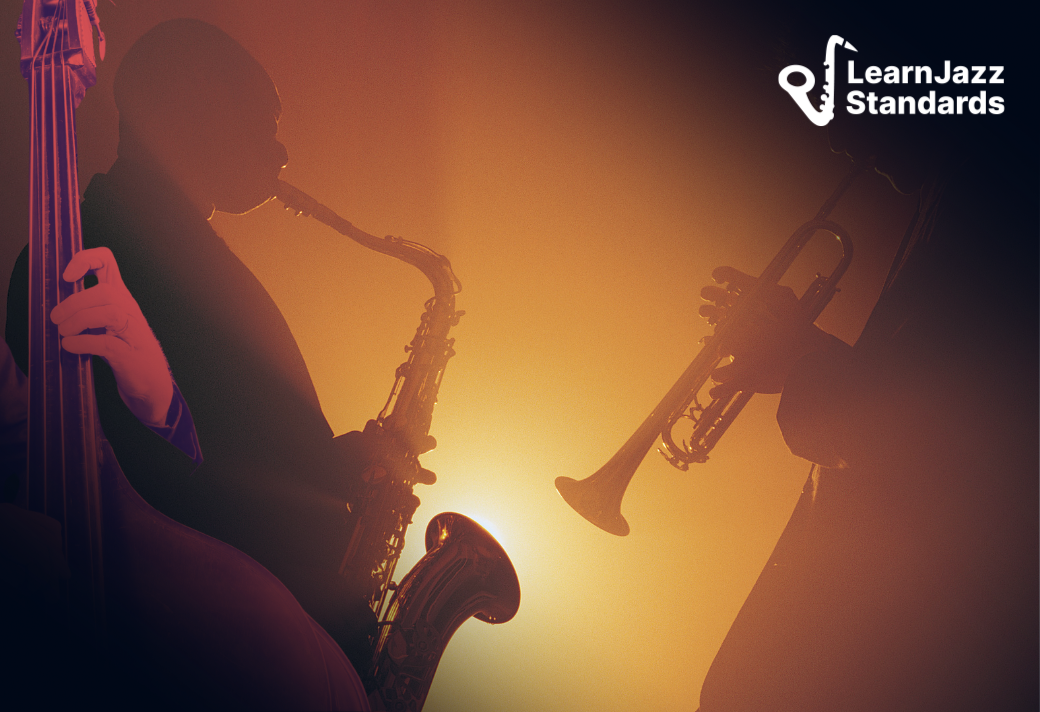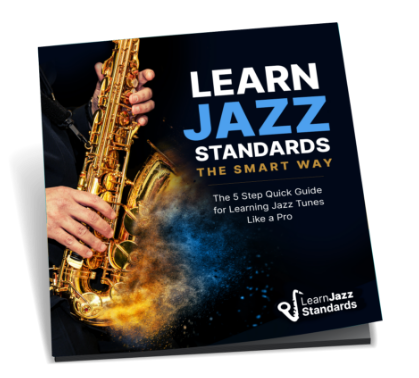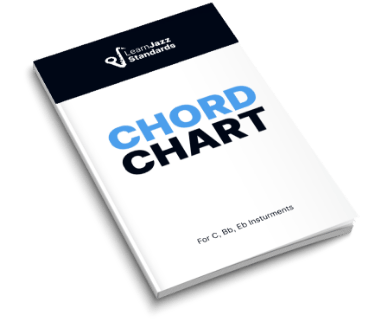Jazz history is full of incredible jazz saxophonists, but deciding on the best saxophone players of all time requires some thought and reflection. The jazz saxophonists on this list brought (or are still bringing) something unique to the jazz world.
Whether they were amazing multi-instrumentalists, genre renegades, fearless innovators, or jazz pioneers, the jazz musicians on this list brought something special to jazz saxophone and to the greater jazz culture.
In this article, we’ll learn about 37 famous saxophone players who deserve the title Best Saxophone Players of All Time!
If you play jazz saxophone and want to take your shot at becoming one of the great saxophonists in the scene, then check out the Learn Jazz Standards Inner Circle! There’s no better place to be if you want to seriously improve your jazz chops and saxophone playing.
The Inner Circle has incredible jazz resources and a saxophone-specific course designed to help you become the best jazz saxophone player you can be.
Improve in 30 days or less.
Join the Inner Circle and get access to our Jazz Saxophone Accelerator course.
Table of Contents
Most Famous Saxophone Players Criteria
In this list of the greatest, most famous saxophone players, we’ll consider all different jazz saxophonists from the entire saxophone family, from soprano saxophone players all the way to baritone sax players.
We’ll also consider the development of jazz saxophone playing as an evolutionary process and categorize these saxophone players by the eras in which they were first recognized.
Some of the famous saxophone players on this list survived and thrived through many eras of jazz history. Many played various jazz styles and brought different perspectives to the jazz community. Some grew up learning jazz in jazz clubs, while others had an academic jazz upbringing.
Our categorizations reflect different jazz eras where each player came into their own style and changed music history.
For example, famous saxophonists like Sonny Rollins or Wayne Shorter saw many different jazz eras come and go, but they are each sorted into the era where they first became recognized as sax pioneers.
Our eras of jazz saxophone playing are definitely a simplification of the history of jazz saxophone. However, we have to draw lines somewhere! Remember, these are loose and porous categories. Certainly, many famous saxophone players on the list could appear in several categories.
We’ll look at famous saxophone players from these eras:
- Early Jazz Saxophone Pioneers of the Hot Jazz and Swing Era (1920s-1940s)
- Best Jazz Saxophonists of the Bebop Era (1940s-1950s)
- Famous Jazz Saxophone Players of the Hard Bop, Post-Bop, and Cool Jazz Eras (1950s-1960s):
- Avant-Garde and Free Jazz Eras (1960s-1970s):
- Soul Jazz and Jazz Fusion Sax Players (1970s-1980s)
- Contemporary and Modern Jazz Saxophonists (Active 1990s-Present Day)
So, without further ado, let’s dig into the 37 most famous saxophone players of all time!
If you are new to jazz saxophone and want to get started, check out our article on beginner jazz saxophone.
Early Jazz Saxophone Pioneers of the Hot Jazz and Swing Era: Jazz’s Golden Age (1920s-1940s)
Before digging into famous sax players from this important era of jazz history, let’s learn a bit about the early jazz scene.
Hot Jazz Era (1920s-1930s)
Hot jazz was the first recorded version of jazz we have access to.
Technological advances in radio broadcasting and audio recording allowed musicians to create a sonic record of performances, which was previously not possible or practical.
These early recordings helped create a jazz phenomenon that swept the entire country. In fact, the Roaring 20s is also known as the Jazz Age because jazz music perfectly represented modernity and captured the energy and vitality associated with the era.
Hot Jazz music pushed against traditional musical boundaries, just as American youth pushed back against traditional gender and social roles.
Hot jazz originated in New Orleans but spread to nearly all major metropolitan areas in the United States. Generally, Hot Jazz featured small ensembles and solo performers who emphasized spontaneous, high-energy performances.
Swing Era (1930s-1940s)
Swing directly followed the Hot Jazz era and represented jazz at its most popular point in American history. Jazz music was pop music, and jazz musicians—along with their big bands—were the pop stars of the day.
This period was notorious for big bands and jazz orchestras. Swing music featured a smoother, more structured sound compared to the lively energy of hot jazz. It emphasized strong rhythmic grooves, catchy melodies, and orchestrated arrangements.
More importantly, big band jazz was music to be danced to.
Though there were jazz solos and soloists (especially in the saxophone section), the overall performance featured the big band as the main focus. This would not be the case in later periods. This era solidified jazz as a nationwide phenomenon and inspired a whole new generation of sax players.
Lester Young
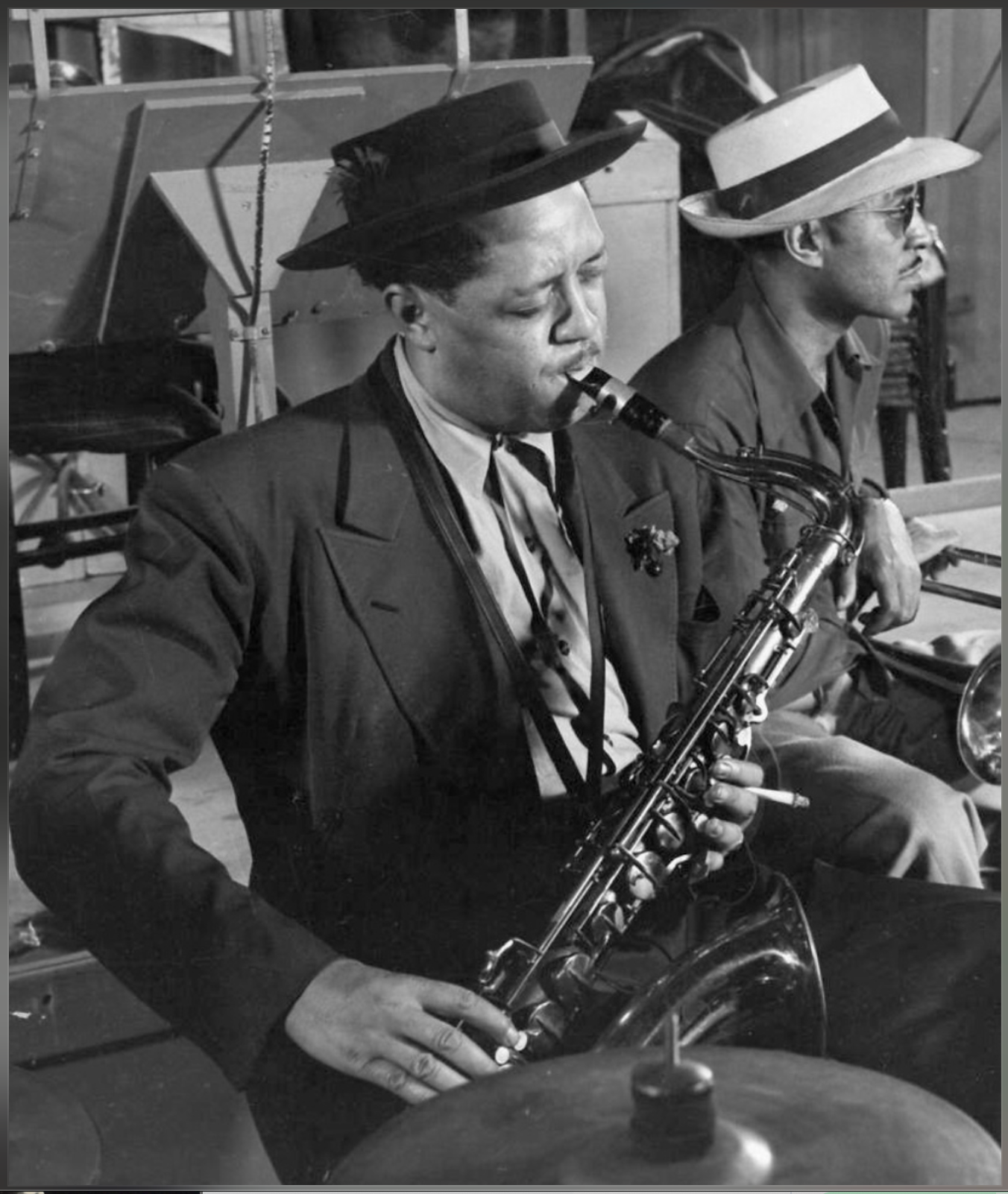
image source: Wikipedia Commons
Lester Young (1909–1959) was primarily a tenor saxophone player who occasionally played clarinet. He was born in Woodville, Mississippi. Nicknamed the “Prez,” he came to fame in Count Basie’s orchestra and was known for his melodic style and smooth tone.
Apart from coining jazz jargon that is still with us today, his early tenor saxophone playing influenced many of the other players on this list, including John Coltrane and Stan Getz.
Check out Lester Young playing in this video:
Johnny Hodges
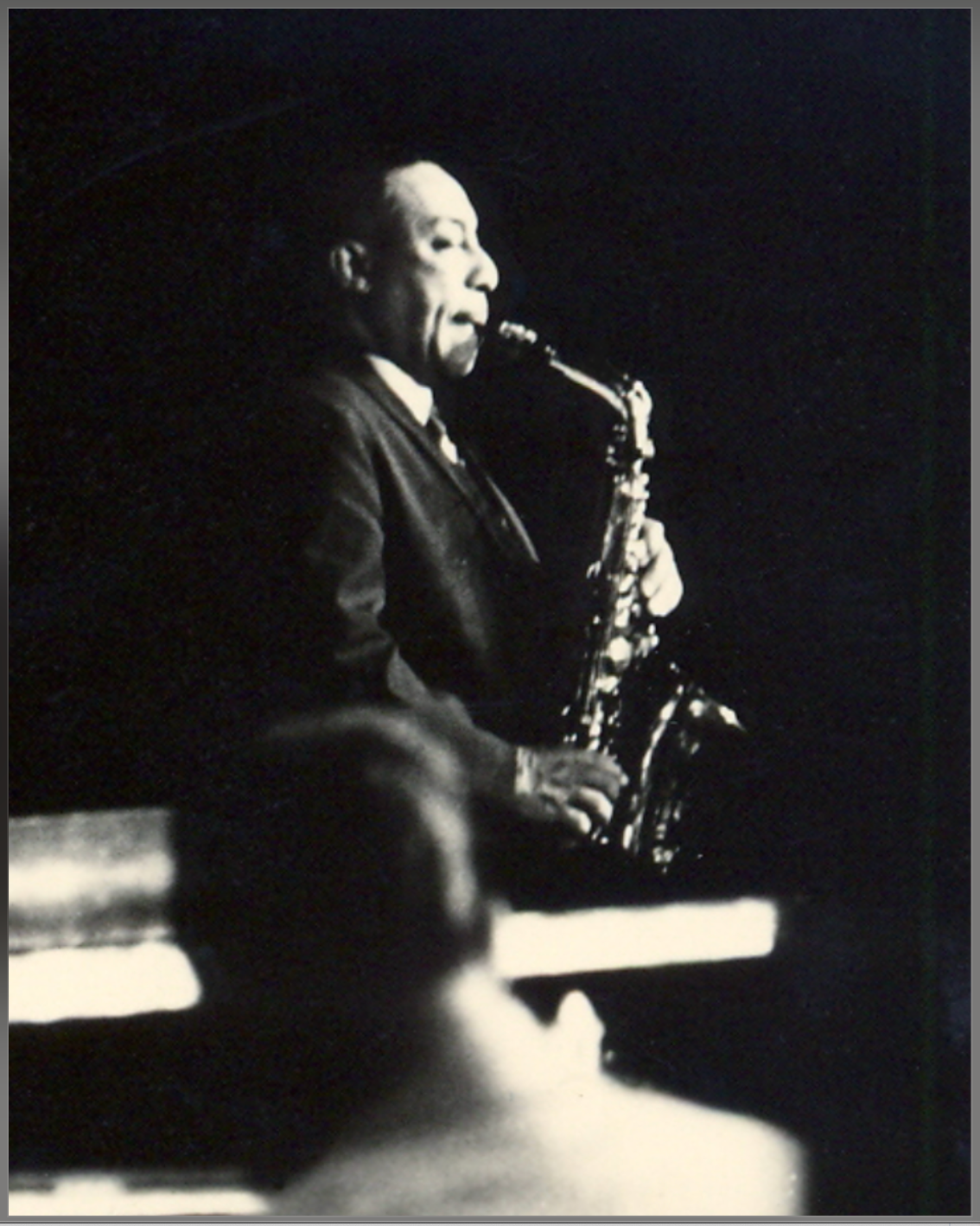
image source: Wikipedia Commons
Johnny Hodges (1907 –1970) was born in Cambridge, Massachusetts, and was the lead alto sax player in the Duke Ellington Orchestra.
As a teen, he studied with another entry on this list, Sidney Bechet. His playing style is characterized by tenderly slurred notes and a vibrato that makes his playing instantly recognizable. Hodges is recognized by many bebop and hard-bop players as a massive influence.
Check out Johnny Hodges playing I Got It Bad:
Benny Carter
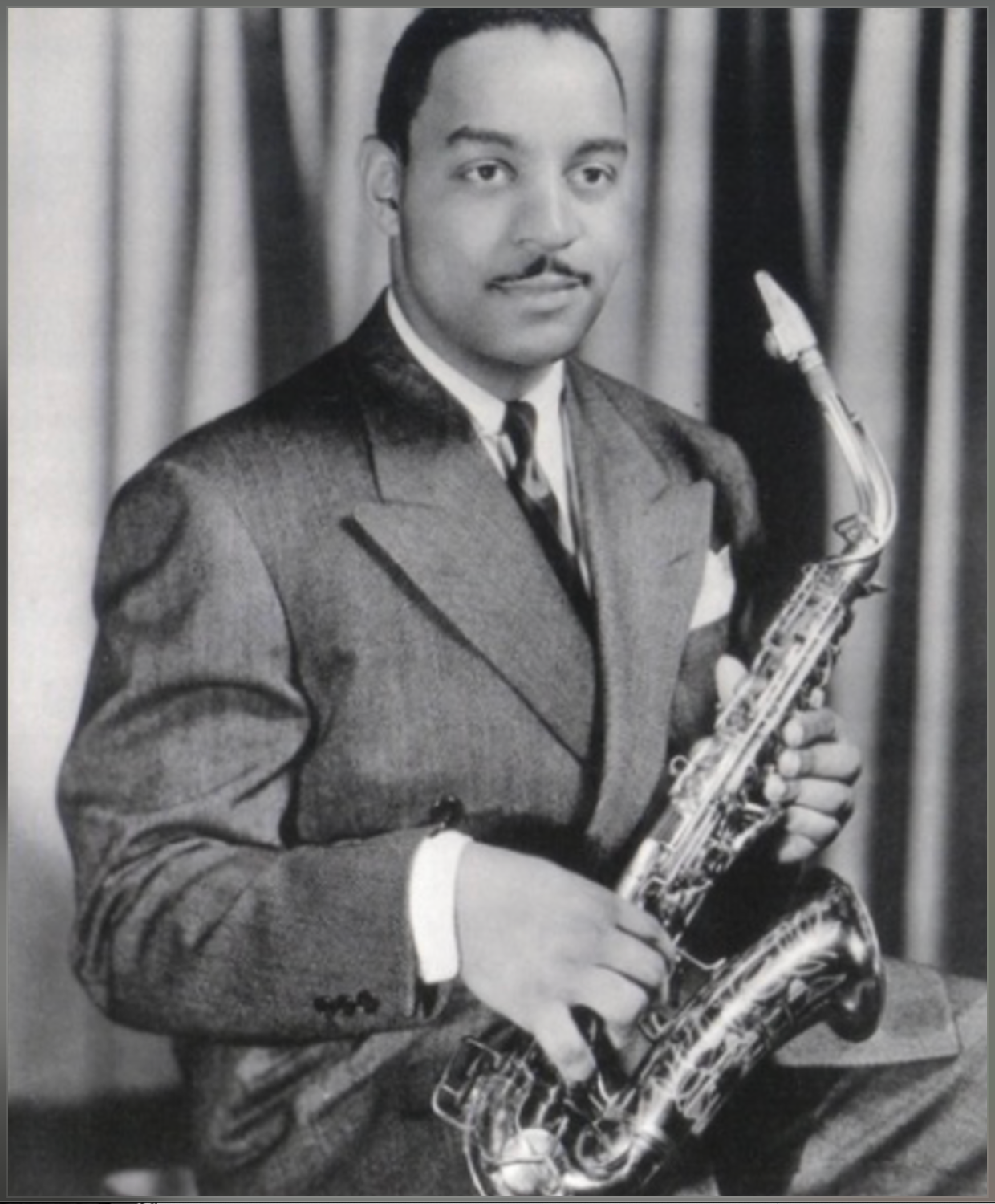
image source: Wikipedia Commons
Benny Carter (1907-2003) was another early alto saxophonist who would pioneer saxophone playing for later generations of musicians. Born in New York City and taught piano at an early age, Carter was a multi-instrumentalist who also had success as a trumpeter, band leader, arranger, and film composer.
Carter set an early example for many jazz musicians who would follow. He is one of jazz’s early entrepreneurs, showing that there is more to the business than performance.
Check out Benny Carter on the jazz standard I Can’t Get Started:
Coleman Hawkins
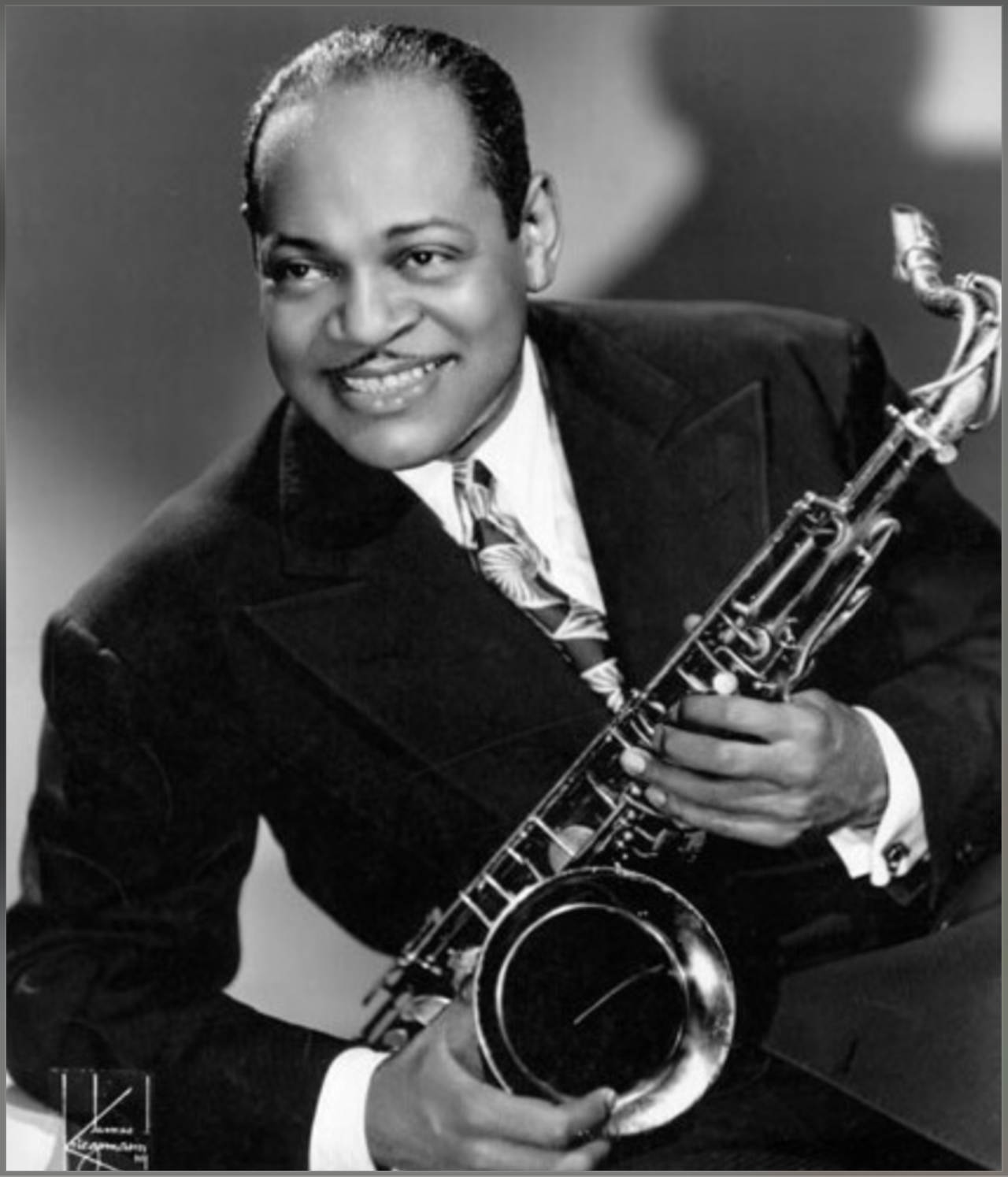
image source: Wikipedia Commons
Coleman Hawkins (1904-1969) was born in St. Joesph, Missouri, and is considered one of the foundational tenor saxophone players in all of jazz history.
Sometimes called “Hawk” and sometimes called “Bean,” Coleman Hawkins took the tenor saxophone to new heights in the Hot Jazz Era, the Swing era, and later in the Bebop era. This famous saxophone player embraced many of the new saxophone players and their innovative styles and concepts, evolving his playing style to match.
This famous tenor saxophonist appears alongside many other foundational jazz icons, including Thelonius Monk, Dizzy Gillespie, Don Byas, Oscar Pettiford, Max Roach, and Sonny Rollins.
Check out Coleman Hawkins on the jazz standard Body and Soul:
Sidney Bechet
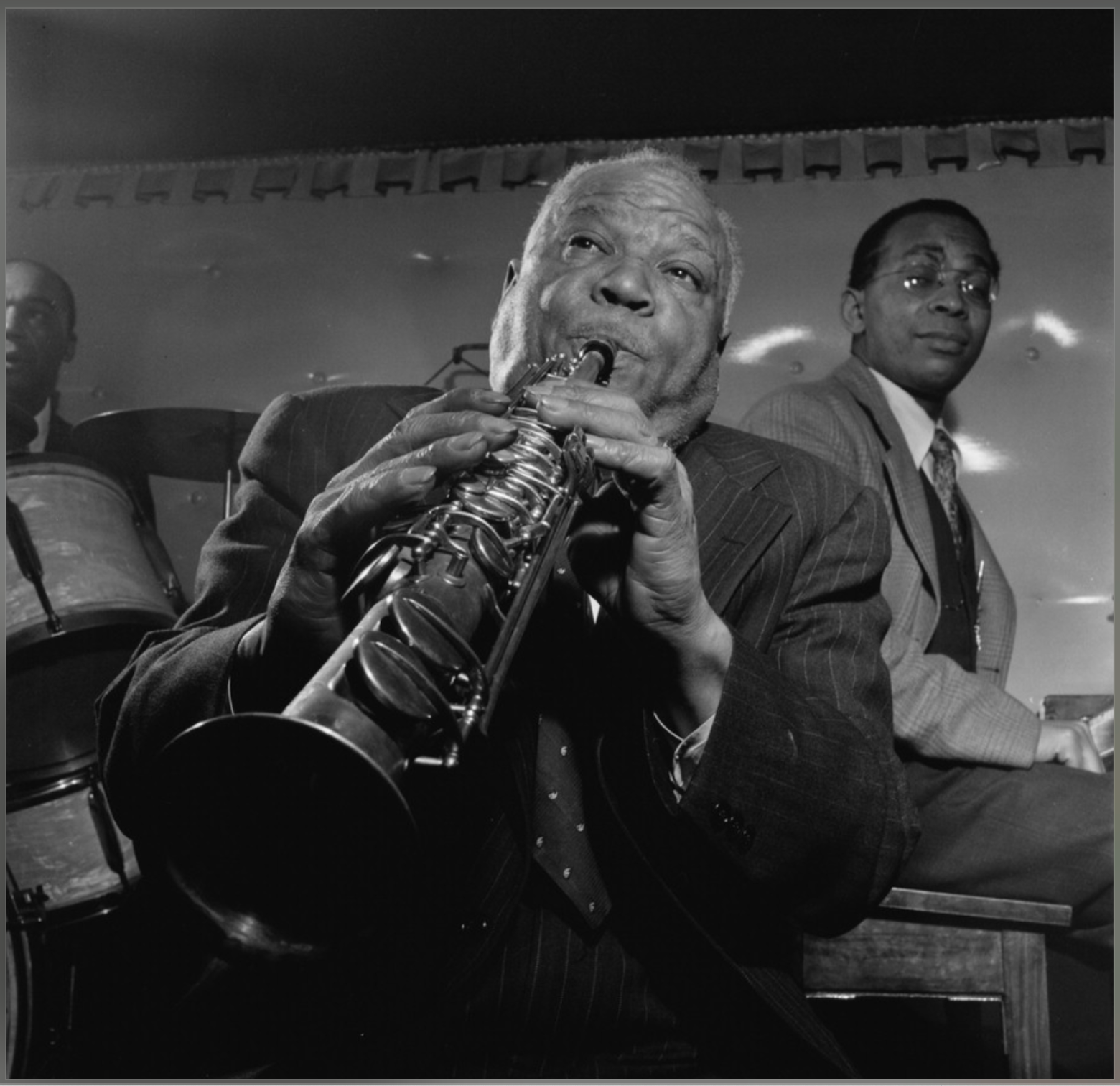
image source: Wikipedia Commons
Sidney Bechet (1897-1959), the only entrant on this list born in the 19th century, was a pivotal figure in the development of jazz and was no doubt a massive influence on the other saxophonists on this list.
Born and raised in New Orleans, this famous saxophone player and Jazz itself came of age and matured together. His improvisational style was one of the first to be recorded and, therefore, served as the de facto saxophone sound for those who would follow him.
He played alongside Louis Armstrong and appeared on many pivotal early jazz recordings. Early in his career, Bechet moved to France and embedded himself in the burgeoning jazz scene in Paris before returning to New York in 1932. Later in his life he would return to France permanently.
Check out Bechet on the French tune Si Tu Vois Ma Mare:
Ben Webster

image source: Wikipedia Commons
Ben Webster (1909-1973) was a jazz musician born in Kansas City and studied music from an early age. He was a renowned tenor saxophone player and played tenor sax alongside Johnny Hodges in Duke Ellington’s Orchestra. This famous saxophone player considered Hodges a major influence.
He played in bands with Benny Carter, Fletcher Henderson, and Cab Calloway before becoming a band leader in New York in the 40s and 50s. Webster’s career would take him to Europe, where he resided and performed till his death in 1973.
Check out Ben Webster playing on Somewhere Over The Rainbow:
Best Jazz Saxophonists of the Bebop Era (1940s-1950s)
The Bebop era directly followed the Swing era and was, in many ways, a direct revolt against it. When they weren’t on the bandstand, jazz players often got together to jam, practice and play. Many players loved the structure of the small combo and felt liberated from the constraints of orchestrated jazz.
Bebop, or “bop,” evolved from young, innovative musicians who sought greater artistic expression and technical challenges in music. The style includes fast tempos, intricate melodies, and advanced harmonies, which require a high level of virtuosity and improvisational skill.
This period is when jazz started to become “art music.” Jazz musicians were no longer performing to please audiences of dancers. Rather, they were practicing and performing in the service of a greater artistic vision, which included technical mastery, artistic expression, and musical identity.
Many of the famous saxophone players in this list first cut their teeth in the bebop era.
Charlie Parker
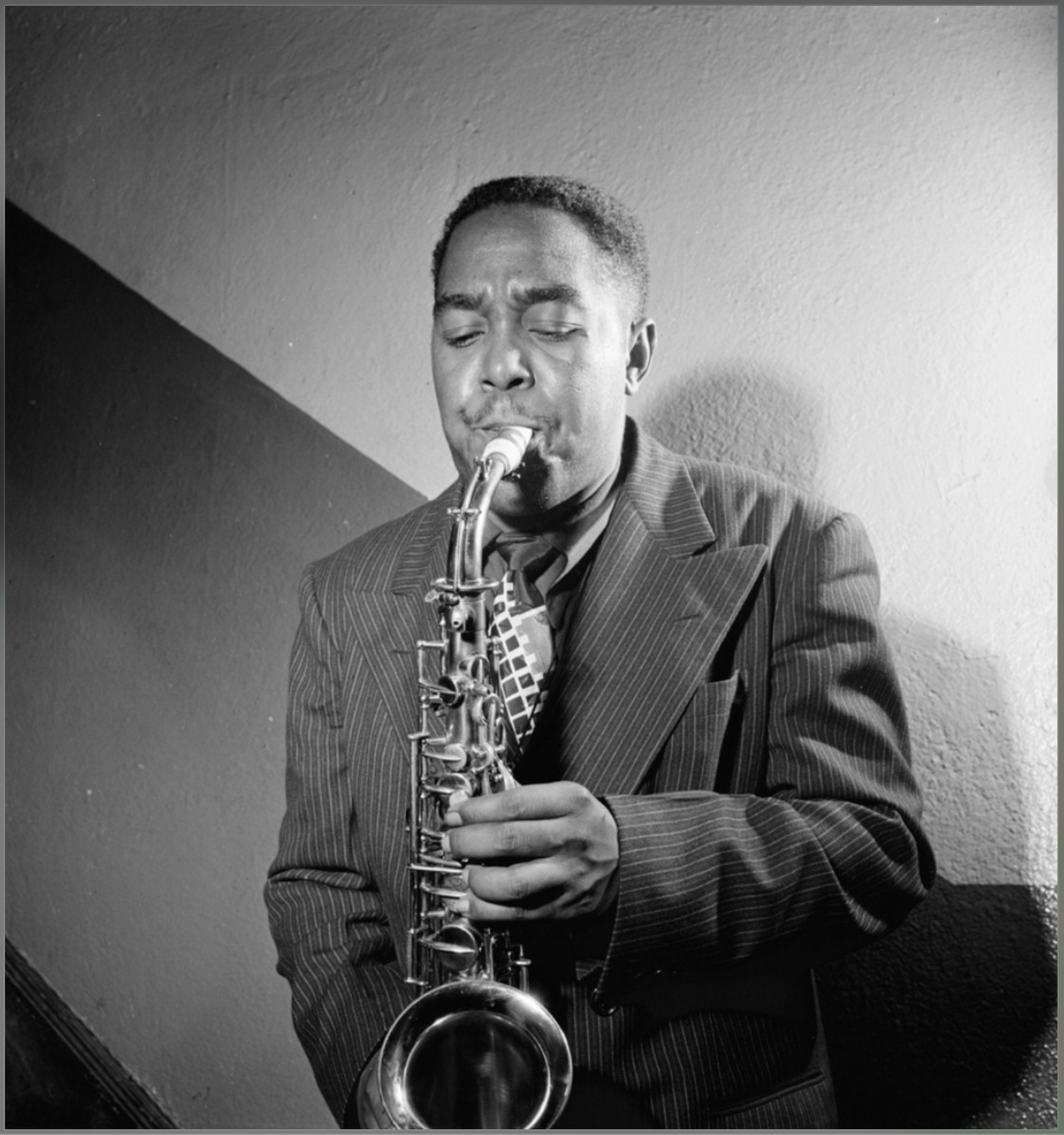
image source: Wikipedia Commons
Out of all the famous saxophone players on this list, we’ve got to carve a special place out for Charlie Parker.
Charlie Parker (1920–1955), the king of Bebop, was born in Kansas City, Missouri, and was perhaps the most influential saxophone player of all time. Charlie Parker’s contributions to bebop vocabulary and improvisation can’t be understated.
Nicknamed “Yardbird” or “Bird,” he was not only an incredibly virtuosic alto saxophone player, but he also introduced new harmonic and rhythmic concepts into the jazz language that are now foundational to the genre.
Here is Charlie Parker (and Buddy Rich) playing on Celebrity, a rhythm changes head:
Dexter Gordon
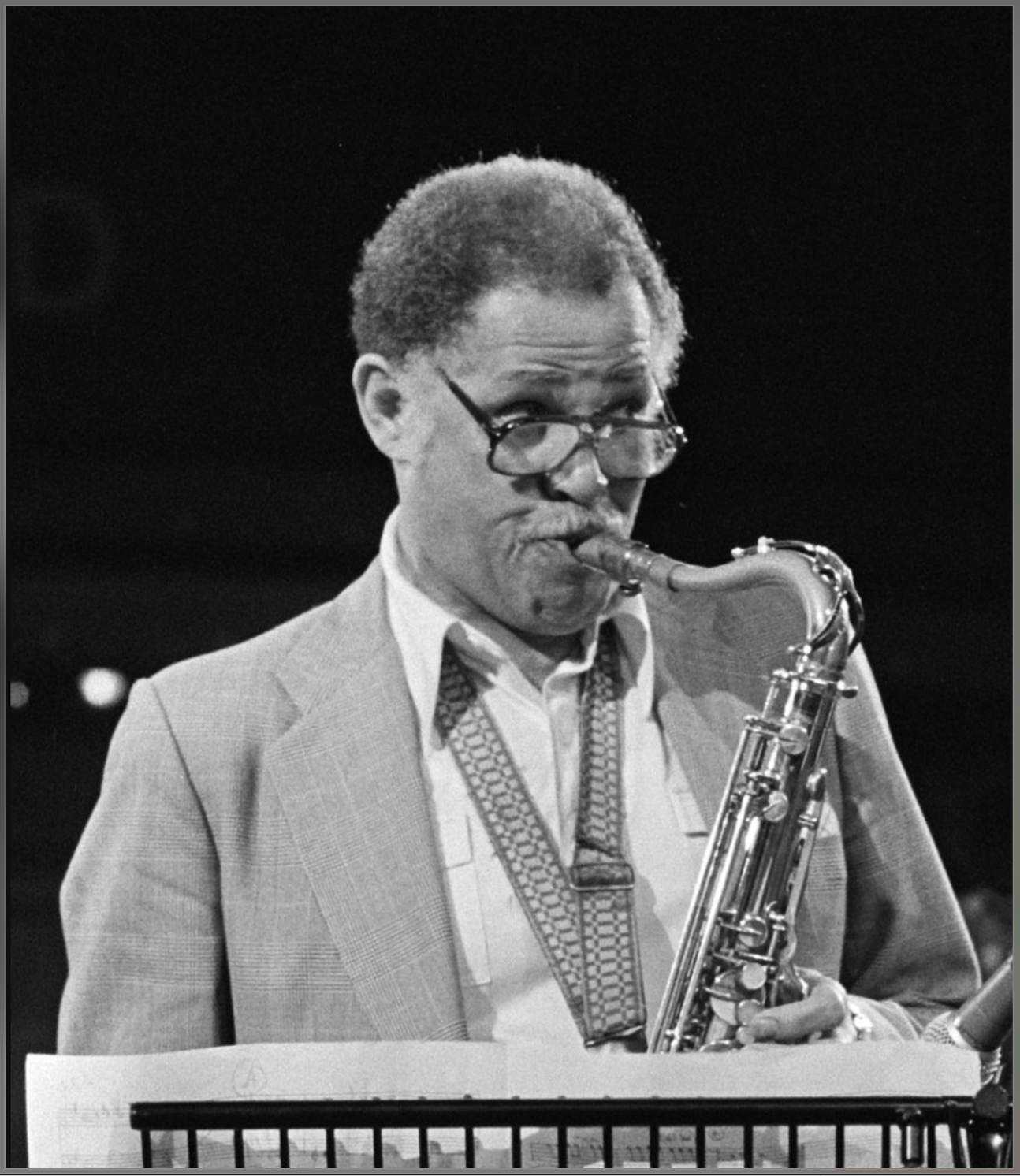
image source: Wikipedia Commons
Dexter Gordon (1923–1990) was a composer, band leader, and influential tenor saxophone player who had a long and successful career spanning over 40 years. He was known for quoting the melodies of other songs in his improvisation, a characteristic that would become commonplace in jazz improvisation.
Through his friendly and humorous stage presence, Dexter brought great showmanship and levity to jazz. His playing influenced other famous sax players like John Coltrane and Sonny Rollins.
Check out Dexter Gordon playing on the classic jazz standard Lady Bird:
Sonny Stitt
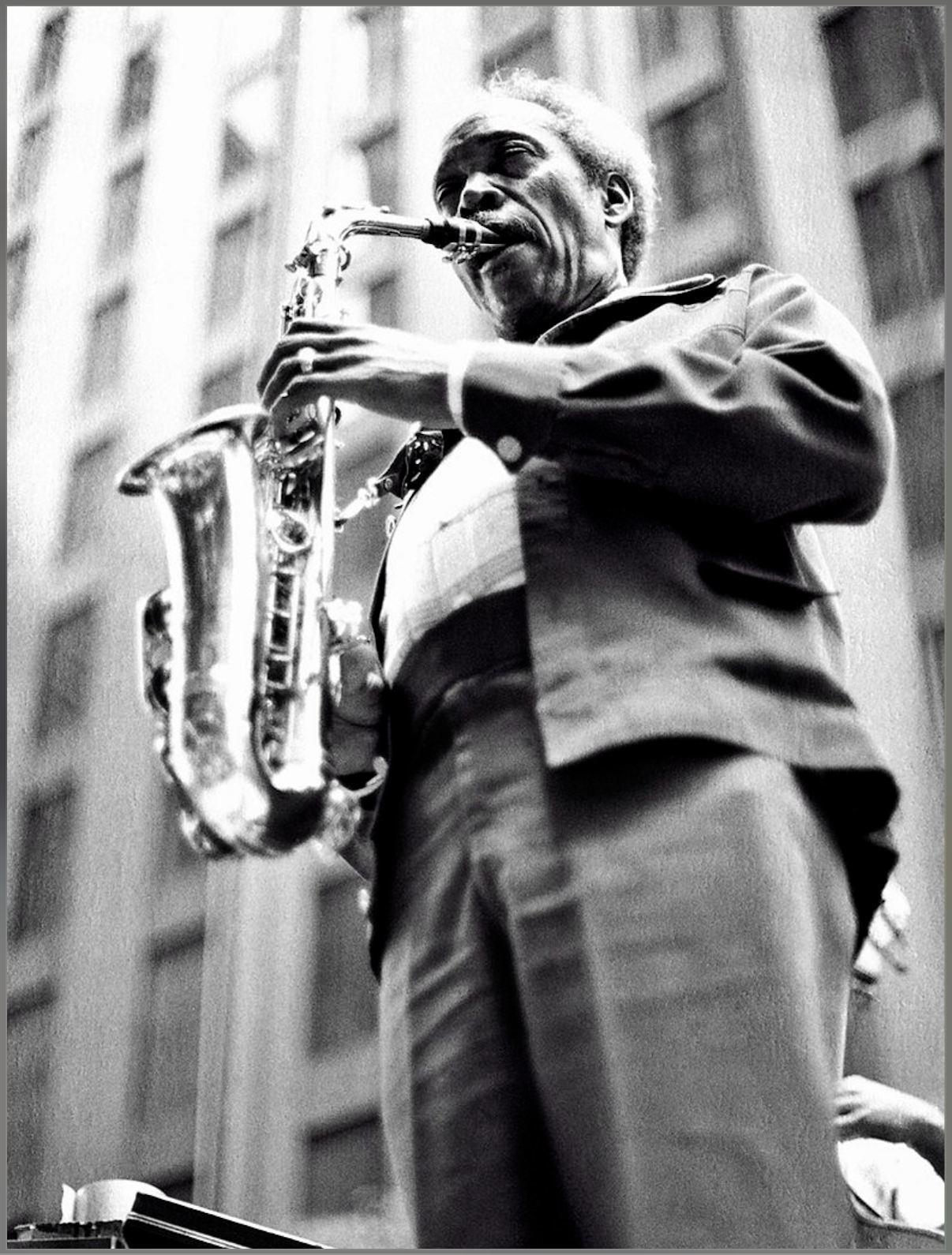
image source: Wikipedia Commons
Sonny Stitt (1924–1982) was a tenor saxophone player who occasionally also played alto saxophone and baritone saxophone. Stitt is one of the most recorded jazz saxophone players of all time, recording over 100 albums throughout his career.
He is known for his warm tone and blistering bebop lines. When playing alto sax, he was often called the “New Bird” and was compared to Charlie Parker, who even remarked on their similarities. However, Sonny Stitt’s voice came into its own when he played the tenor saxophone.
Notably, famous saxophone players Cannonball Adderly and Phil Woods also were given the moniker “New Bird.”
Check out Sonny Stitt and Dizzy Gillespie playing on the standard On The Sunny Side of the Street:
Art Pepper
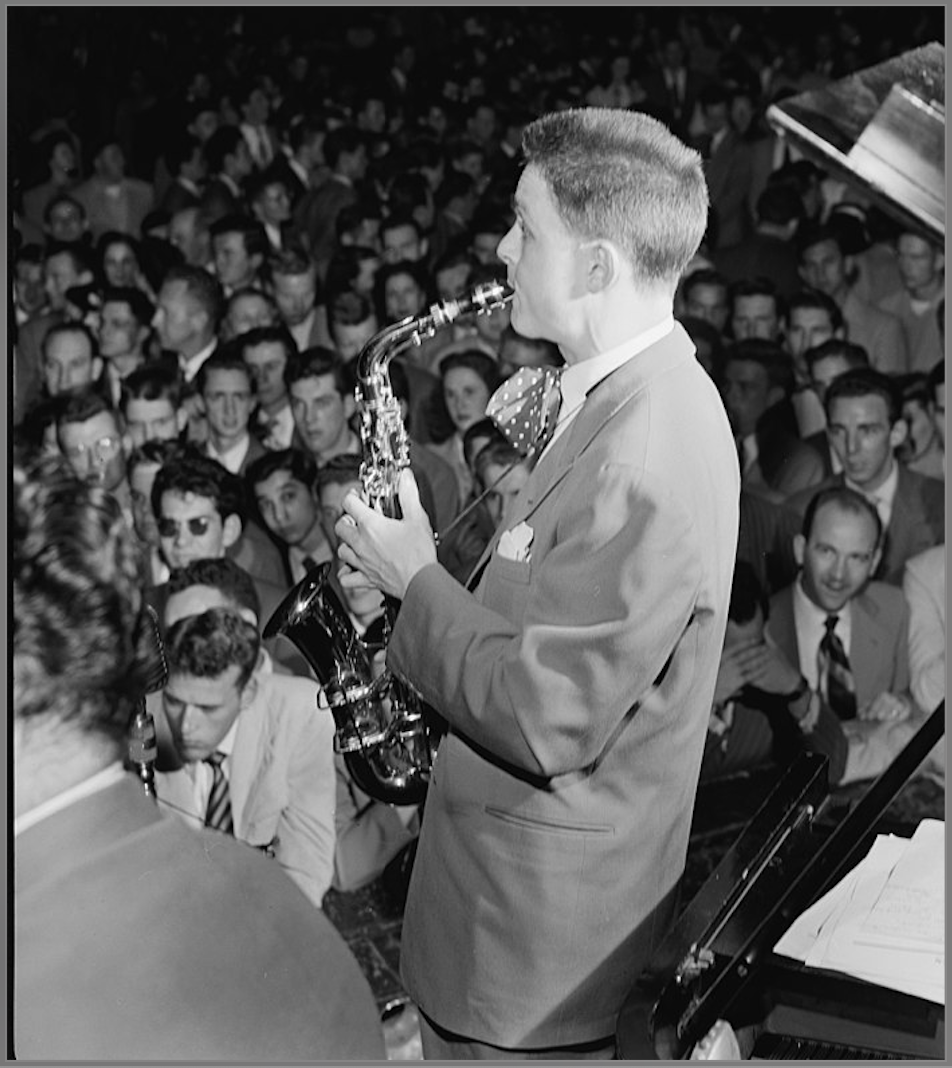
image source: Wikipedia Commons
Art Pepper (1925–1982) was an alto saxophonist who also occasionally played clarinet and bass clarinet. Born in California, his music career began at an early age. He became a professional sax player before reaching adulthood, playing alongside Benny Carter at the age of 17!
He would soon go on to join Stan Kenton’s orchestra.
He became a staple of the West Coast jazz scene alongside other household names like Gerry Mulligan and Chet Baker. By the time of his death in 1982, he was considered one of the world’s greatest alto saxophonists.
Check him out crushing the blues:
Lee Konitz
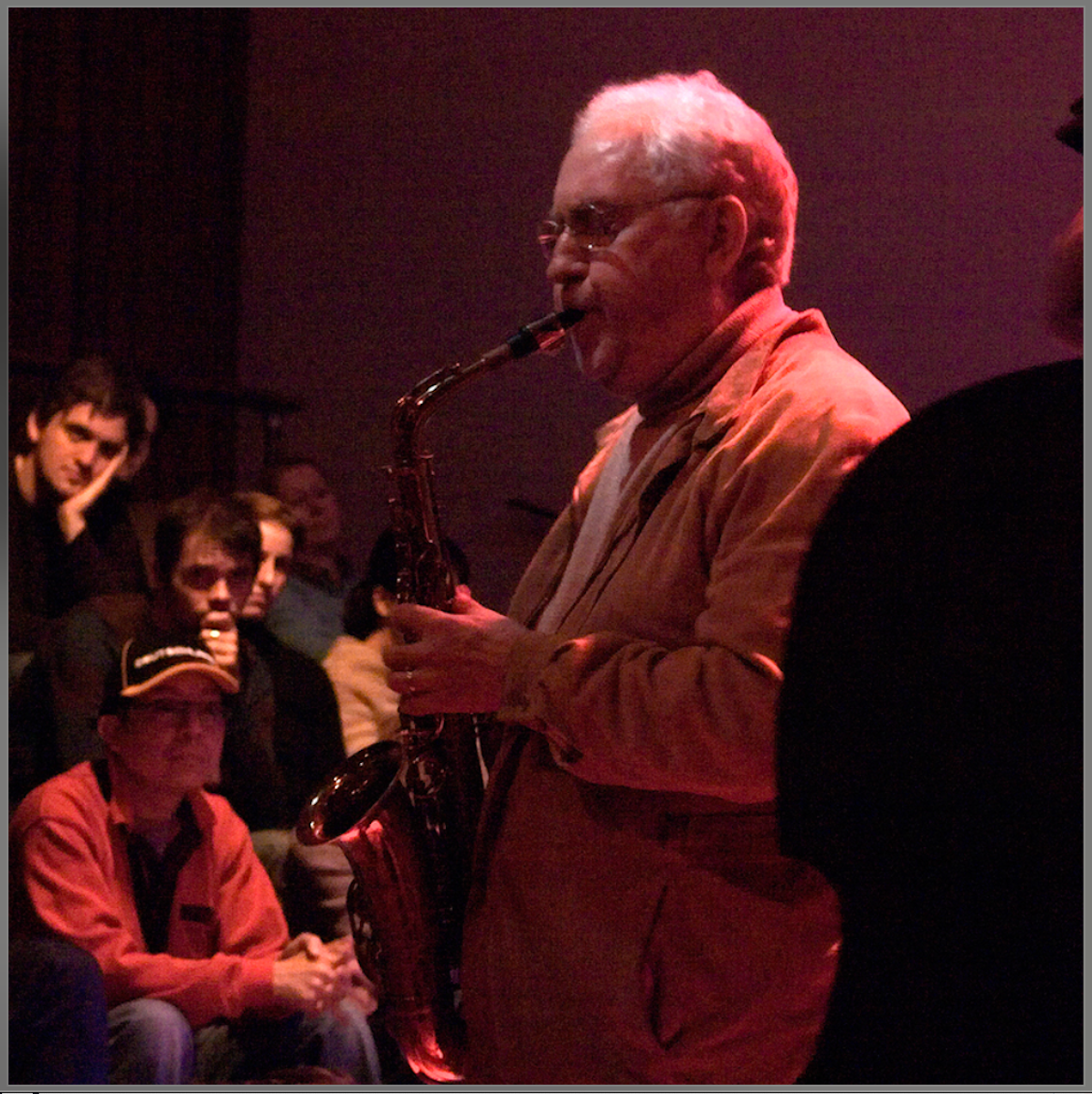
image source: Wikipedia Commons
Lee Konitz (1927–2020) was an alto saxophone player and composer whose career started in the bebop era and passed through various eras of jazz. Lee was known for combining long melodic lines with interesting rhythmic concepts, no doubt inspired by his friend and mentor Lennie Tristano.
In the bebop era, alto sax players were often compared to Charlie Parker. However, Lee avoided that comparison because of his unique sound and improvisational sensibilities. He played with many jazz icons like Miles Davis, Gil Evans, and Gerry Mulligan.
Lee’s career even branched into the Avant-garde jazz scene, working with names like Ornette Coleman and Charles Mingus.
Check out Lee Konitz crushing it on the classic jazz standard All the Things You Are:
Famous Jazz Saxophone Players of the Hard Bop, Post-Bop, and Cool Jazz Eras (1950s-1960s):
These eras of jazz saxophone are distinct but related enough to warrant putting them together. Many sax players in this section could be considered part of all three movements depending on which part of their career you focus on.
These three sub-genres of jazz evolved from Bebop (or as a reaction to it) and represent how different jazz philosophies grew from the initial seeds planted by the Bebop revolt. This is where the playing styles of famous saxophone players start to diverge and evolve out of the swing and bebop eras.
Cool Jazz
The Cool Jazz era emerged in the late 1940s and gained prominence in the 1950s as a reaction to the intensity and energy of bebop. Cool jazz features relaxed tempos, lighter tones, and more subtle, melodic, and understated improvisations.
Hard Bop
The Hard Bop era emerged in the mid-1950s and was also a response to the virtuosic demands of bebop. Though it kept the fast tempos and complex improvisational ideas, it pulled more heavily from blues and gospel music, making hard bop more accessible to average listeners.
Post-Bop
The Post-Bop era sought to move past Bebop and hard bop by incorporating elements from modal jazz, classical music, world music, and other musical characteristics that were not generally associated with jazz at the time.
Though this style retained elements of bebop and hard bop, it more prominently featured complex harmonies, unusual time signatures, and a further emphasis on individual artistic expression, musical identity, and musical experimentation.
Let’s check out the famous saxophone players from this important and foundational era of jazz.
John Coltrane
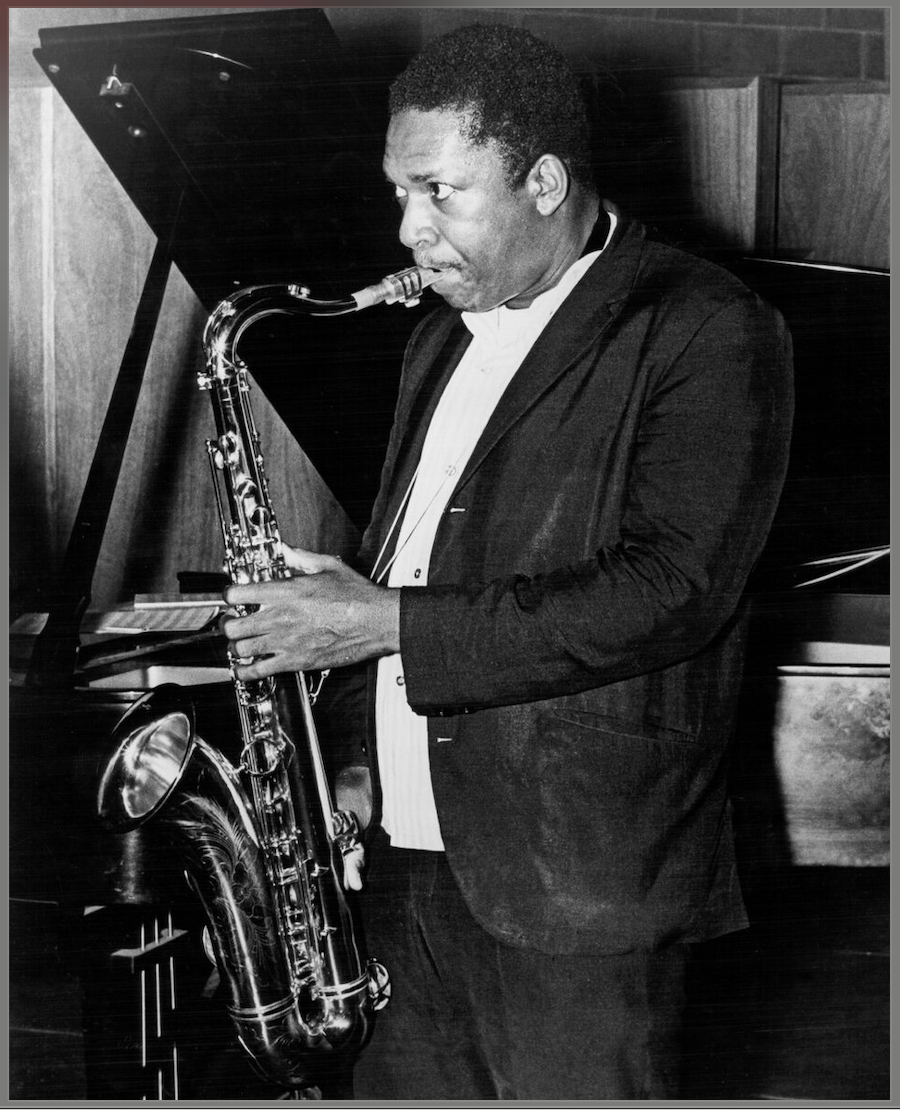
image source: Wikipedia Commons
John Coltrane (1926–1967) is one of the most famous saxophone players of all time. He is instantly recognizable as a saxophone wizard and the creator of the “sheets of sound.” No other saxophone player sounds quite like him.
Though he ocassionally played alto saxophone and soprano saxophone, he usually played tenor saxophone. John Coltrane was always hungry to learn more and practiced at a high level for much of his life. He always approached jazz with a student’s mindset.
His career gave him many opportunities to play with his idol, Charlie Parker, and other big names in jazz, such as Miles Davis, Thelonius Monk, Red Garland, and Lee Morgan. Many of his compositions have since become classic jazz standards, including Giant Steps, Moment’s Notice, and Lazy Bird.
Here is John Coltrane playing on the tune Alabama:
Cannonball Adderly
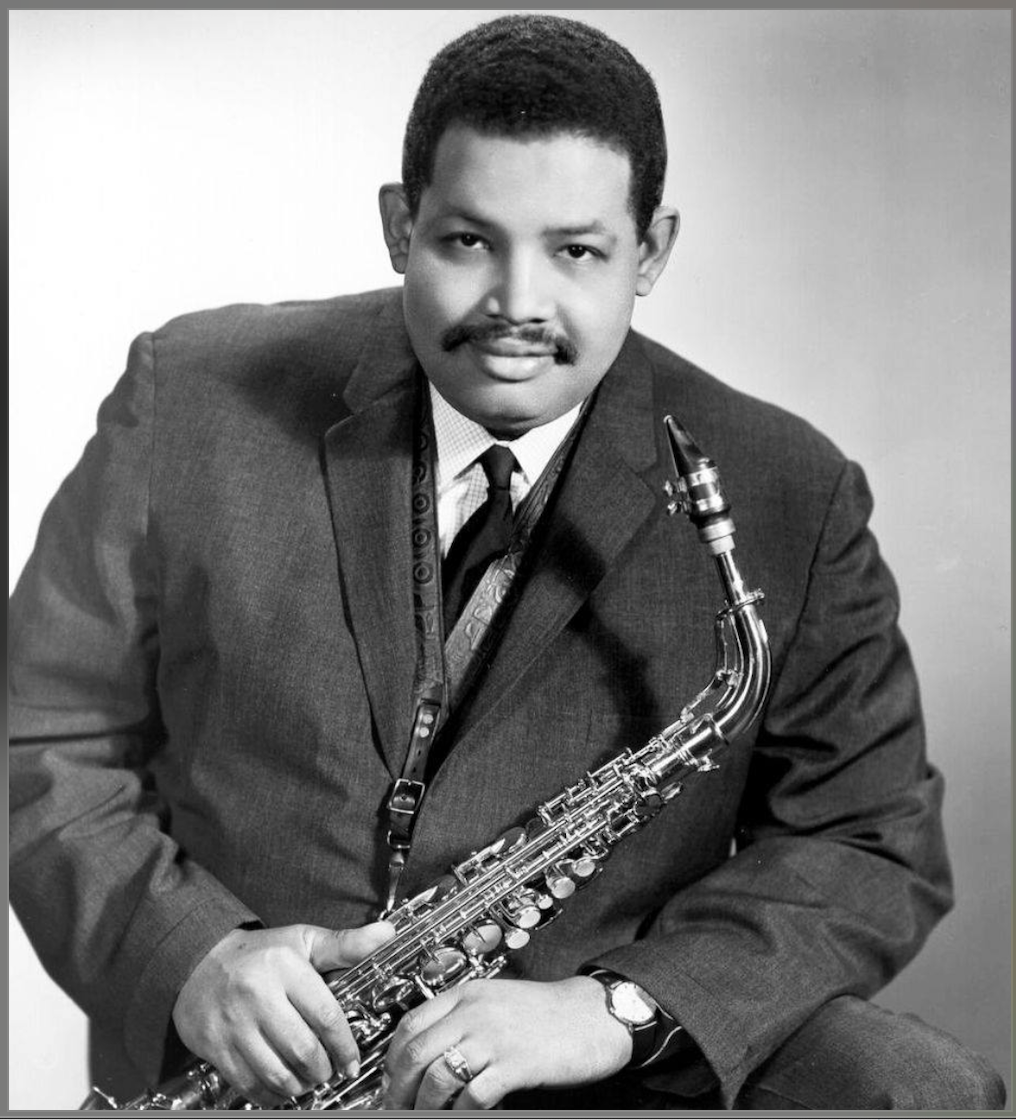
image source: Wikipedia Commons
Cannonball Adderly (1928–1975) was an alto saxophonist who came of age in the hard bop and Post-Bop eras of jazz. He would go on to become a pivotal figure in the Soul Jazz movement, playing on the classic tune Mercy, Mercy, Mercy, a crossover hit on the R&B and pop music charts.
Cannonball Adderly played with the Miles Davis sextet, appearing on the albums Milestones (1958) and Kind of Blue (1959). He was sometimes called the “New Bird,” which was a name also given to contemporary jazz saxophonist Phil Woods.
Here is Cannonball Adderly playing on his own composition Work Song:
Stan Getz
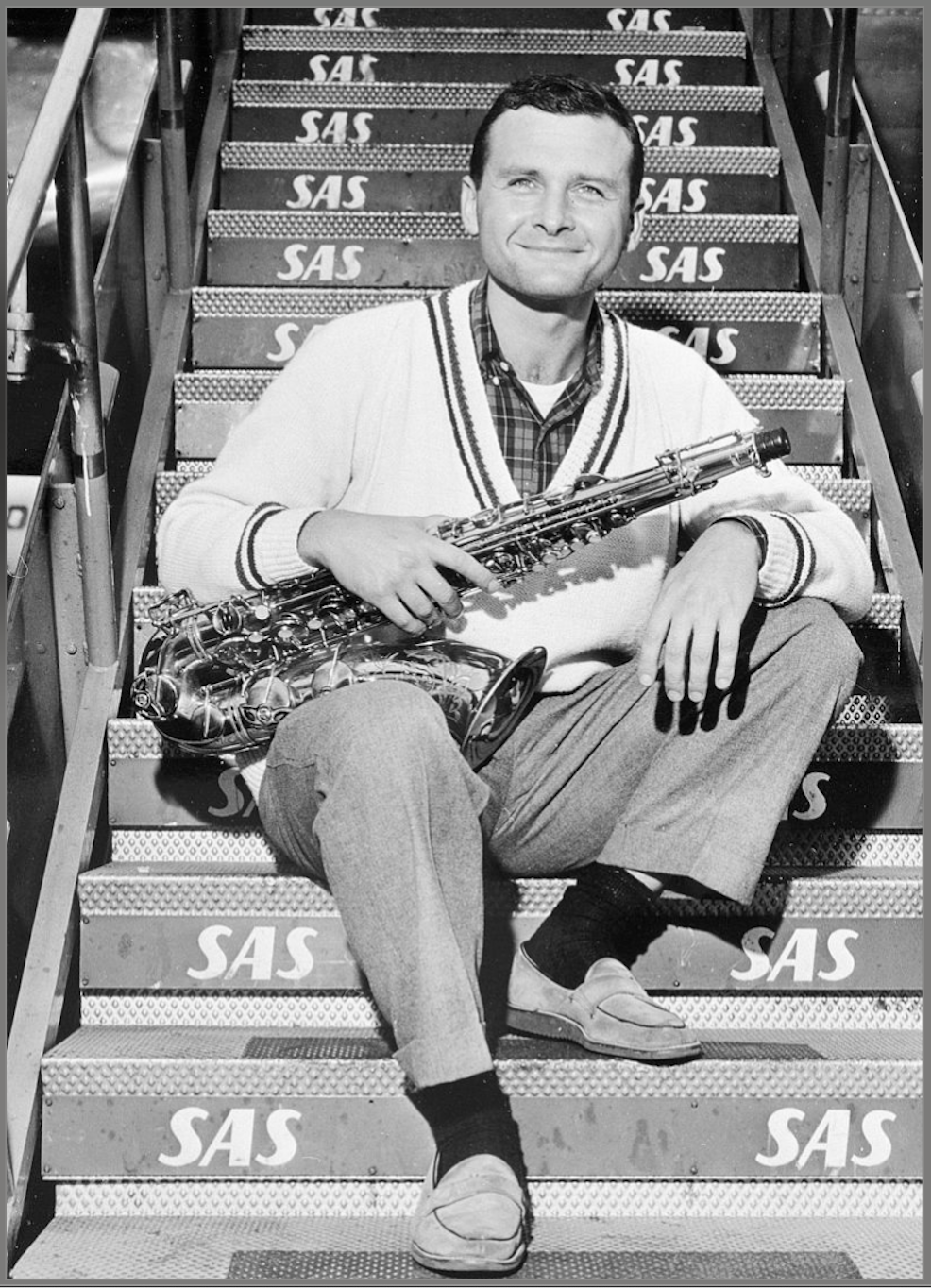
image source: Wikipedia Commons
Stan Getz (1927–1991), also known as “The Sound,” was a tenor saxophonist who had a characteristically warm tone and smooth playing style that became synonymous with the cool jazz movement. He was often compared to Lester Young.
Stan Getz is also notorious for being one of the American jazz saxophonists who helped to popularize Bossa Nova in the US, working alongside Bossa Nova artists Antônio Carlos Jobim, João Gilberto and Astrud Gilberto.
Here is Stan Getz playing on the Bossa Nova tune Wave:
Joe Henderson
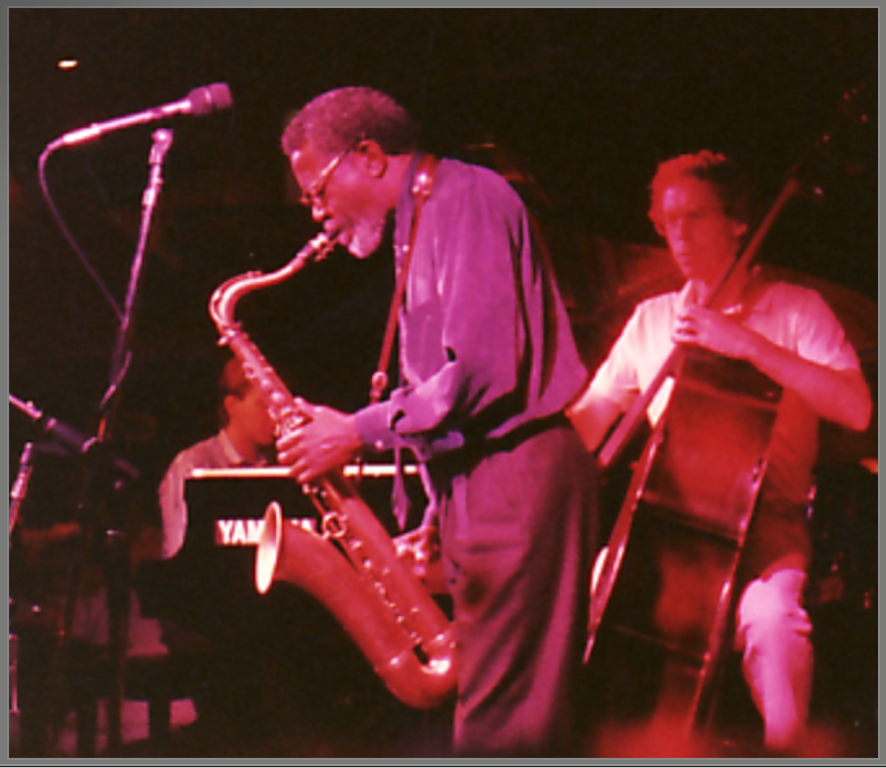
image source: Wikipedia Commons
Joe Henderson (1937–2001) was an iconic American jazz tenor saxophonist with a distinctive improvisational style and a long professional music career that took him through various jazz eras.
Though his playing was firmly rooted in hard bop, he evolved to embrace Latin Jazz, R&B, and Avant-garde jazz. In a five-year span, he appeared on 30 albums for Blue Note artists, including classic jazz albums like Lee Morgan’s The Sidewinder and Horace Silver’s Songs For My Father.
His original composition, Inner Urge, has become a jazz standard.
Check out his quartet from 1977:
Sonny Rollins
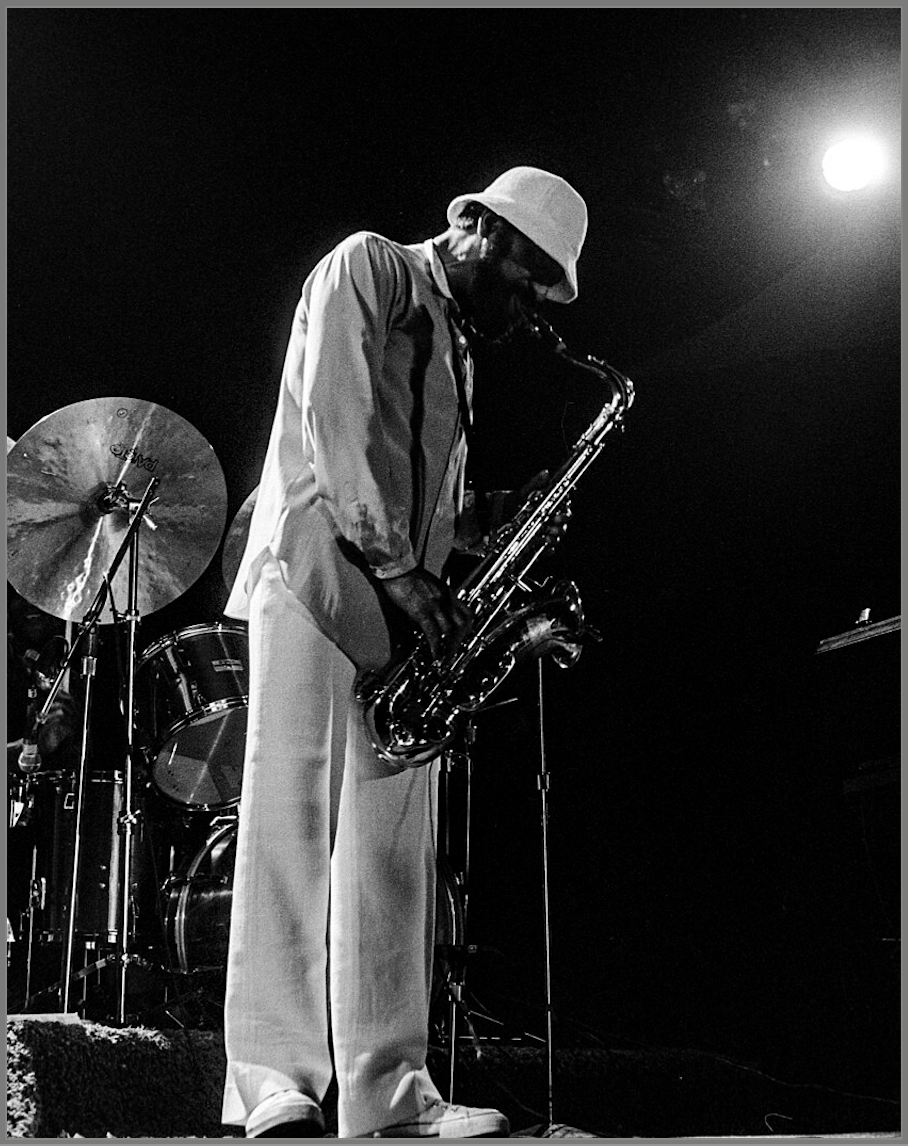
image source: Wikipedia Commons
Sonny Rollins (1930) is one of the most iconic tenor players and professional musicians of all time. This Tenor sax player has had a career spanning seven decades and is still alive today (as of the publish date of this article). At 93, Sonny Rollins is a living jazz legend.
As a composer and leader of his own band, this professional musician composed many jazz standards we play and practice over to this day, including Airegin, Doxy, Oleo, and St. Thomas.
Know for his incredible jazz vocabulary, idiosyncratic and quirky improvisational prowess, and unique sound, there is no doubt that Sonny Rollins is one of the best jazz saxophonists on this list.
With a career spanning seven decades, Rollins has worked with countless jazz legends, including Miles Davis and the Miles Davis Quintet, Charlie Parker, and Thelonius Monk. His album Saxophone Colossus (1957) is a foundational jazz album for jazz fans.
Check out Rollins playing on his original composition St. Thomas:
Hank Mobley

image source: Wikipedia Commons
Hank Mobley (1930–1986) was a tenor saxophonist known for his laid-back and subtle approach to the instrument. Often compared to his contemporaries, he wasn’t as aggressive as players like John Coltrane, nor was he as mellow as players like Lester Young.
This middle-of-the-line approach guaranteed him plenty of work with many other jazz greats, including Lee Morgan, Art Farmer, Pepper Adams, Milt Jackson, Sonny Clark, Herbie Hancock, and Wynton Kelly.
Mobley was also an original member of Art Blakey’s Jazz Messengers, working with the drummer in early iterations of the group. He was also an accomplished band leader, releasing many albums over the course of his career, his most famous being the 1960 album Soul Station.
Check out this rare footage of Mobley playing on the tune Summertime in 1968:
Gerry Mulligan
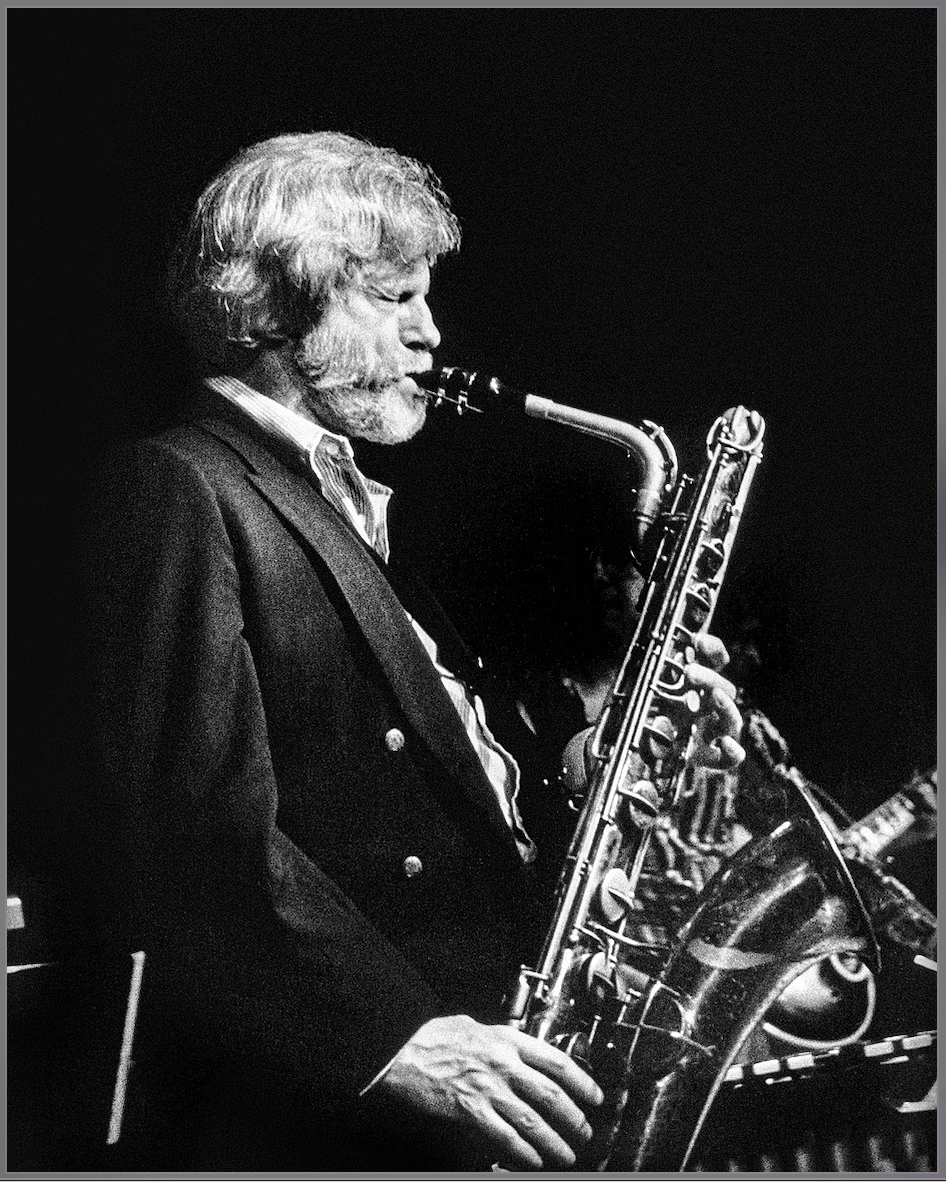
image source: Wikipedia Commons
Gerry Mulligan (1927–1996) was an iconic baritone saxophone player, composer, and arranger. Well-versed in other wind instruments in the saxophone family and the piano as well, Mulligan was a powerful voice in the cool jazz movement.
He came to fame playing with Miles Davis during the Birth of the Cool era. He also worked alongside Chet Baker and arranged for Miles Davis and Stan Kenton, among others. He also worked with the Dave Brubeck Quartet and Fletcher Henderson’s orchestra.
However, he is best known for his work with trumpeter Chet Baker and their innovative piano-less quartet. Being a baritone saxophone player, Gerry could handle the low end while Chet covered higher ranges.
His work as an arranger and composer led to some film scoring and composition work for theater later on in his career.
Check out Mulligan playing in 1962 with valve trombonist Bob Brookmeyer:
Benny Golson

image source: Wikipedia Commons
Benny Golson (1929) is another iconic alumnus of the Art Blakey and the Jazz Messengers who went on to have an incredible solo career. He is still active today at 95! He is one of the hard bop tenor players who had a significant impact on the direction of jazz.
As a prolific jazz composer, he is responsible for writing iconic jazz standards like “I Remember Clifford,” “Blues March,” “Stablemates,” “Whisper Not,” and “Along Came Betty.” As a player, he has evolved over a decades-long career.
In the 1960s and 70s, Golson took many gigs composing and arranging for film and TV. His career as a performer took a back seat during this period. However, in the 1980s, he began focusing on performing and recording again.
Check him out playing on his own composition, Whisper Not:
Wayne Shorter
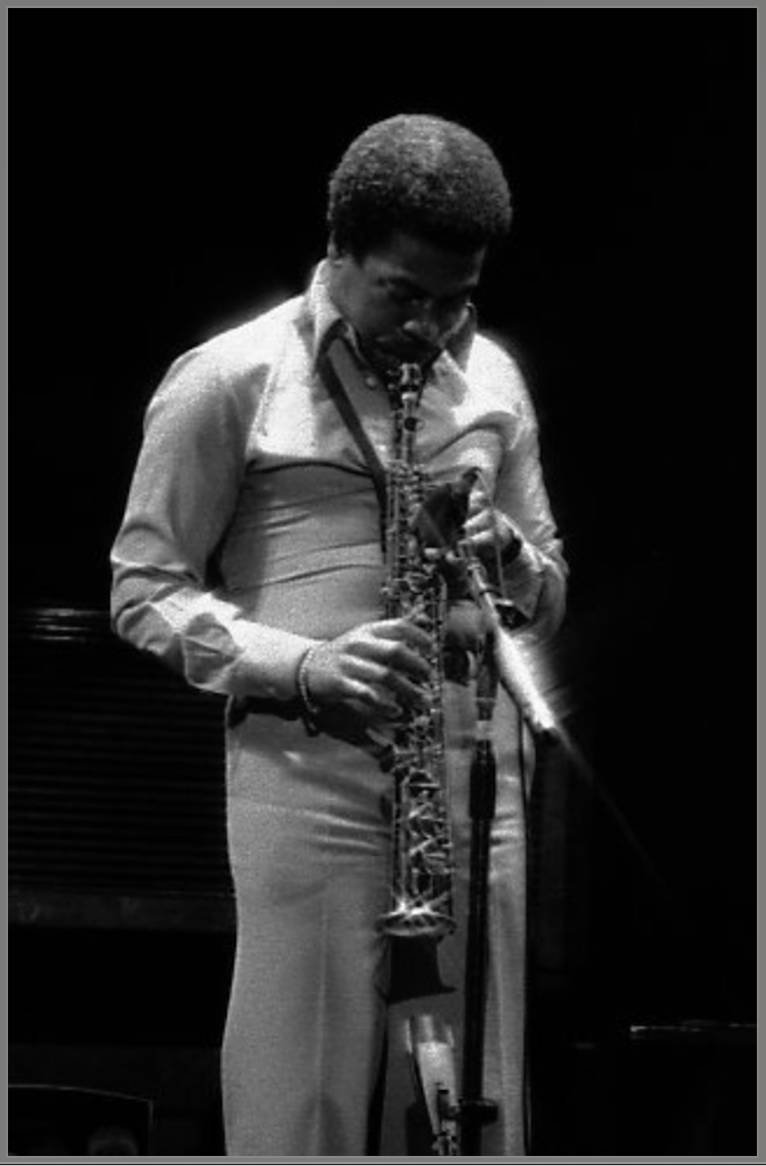
image source: Wikipedia Commons
Wayne Shorter (1933–2023) was an incredibly gifted saxophonist, improviser, arranger, and composer whose hard-bop roots evolved and thrived through the jazz fusion and contemporary jazz eras. Though he started playing on tenor sax, he switched focus to the soprano sax relatively early in his career.
His compositions and recordings are extremely foundational and widely influential. He started his professional career as a Jazz Messenger but soon joined Miles Davis’s second great quintet.
Many of his great jazz compositions, including Footprints, Speak No Evil, Yes or No, and Infant Eyes, are now considered jazz standards. His career spanned many decades and styles. He was a founding member of the fusion band Weather Report, and he appeared on rock hits like Steely Dan’s Aja.
Check out Wayne Shorter performing an arrangement of his tune Footprints live at the Montreal Jazz Festival in 1991:
Lou Donaldson
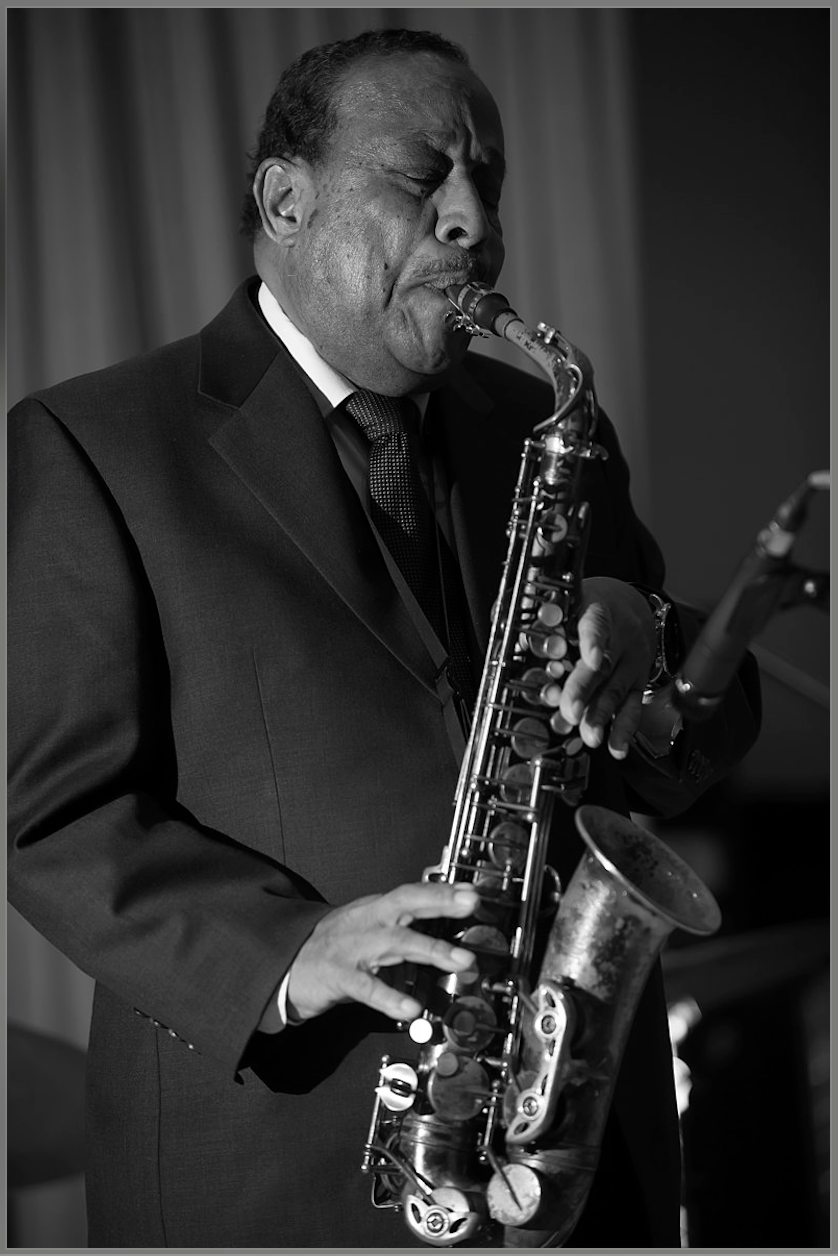
image source: Wikipedia Commons
Lou Donaldson (1926) is an alto saxophone player whose long career saw him work alongside jazz greats like Thelonius Monk, Milt Jackson, Clifford Brown, and Blue Mitchell. Donaldson, who grew up in Chicago, was firmly rooted in bebop and hard bop. However, his style evolved.
He became known for his bluesy, soulful approach to playing the alto saxophone, which set him apart from his contemporaries.
Check out Lou Donaldson playing and singing the blues:
BEFORE YOU CONTINUE...
If you struggle to play amazing jazz solos and want to learn the secret strategies the pros are using to improvise, our free guide will get you on the right track.

Avant-Garde and Free Jazz Eras (1960s-1970s):
Avant-garde jazz emerged in the early 1960s and represented an even greater departure from jazz music’s typical structures and textures. Avant-garde jazz musicians threw out preconceived notions regarding improvisation, song form, composition, and performance.
The result was highly artistic, abstract, and very unconventional musical pieces.
The free jazz movement was one step beyond the Avant-Garde. It took the concepts of freedom and experimentation even further. This style completely abandoned traditional chord progressions, fixed tempos, and formal structures, allowing for unrestricted improvisation and interaction among musicians.
Let’s learn about the famous saxophone players from this period.
Ornette Coleman
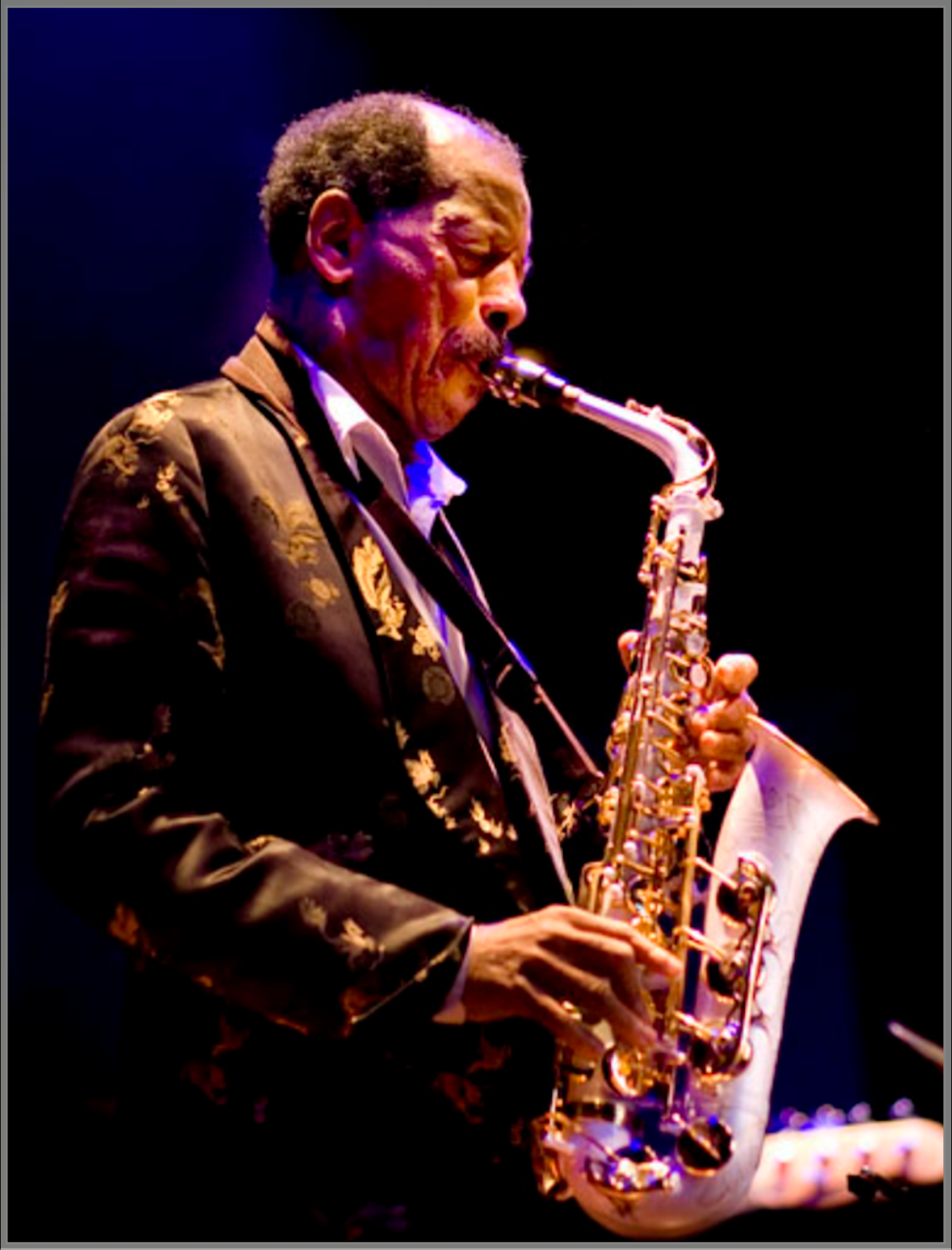
image source: Wikipedia Commons
Ornette Coleman (1930–2015) was an incredibly influential multi-instrumentalist and composer who was at the forefront of the avant-garde and free jazz movements. Coleman rejected various concepts and traditions surrounding jazz, music performance, and music composition.
Coleman challenged so many tropes of jazz and was a controversial figure for many of his contemporaries and critics.
He championed collective improvisation, rejected traditional song forms and compositional approaches, and authentically pushed for new and innovative sounds, textures, and concepts.
Check out the Ornette Coleman Sextet in 1978:
Pharoah Sanders
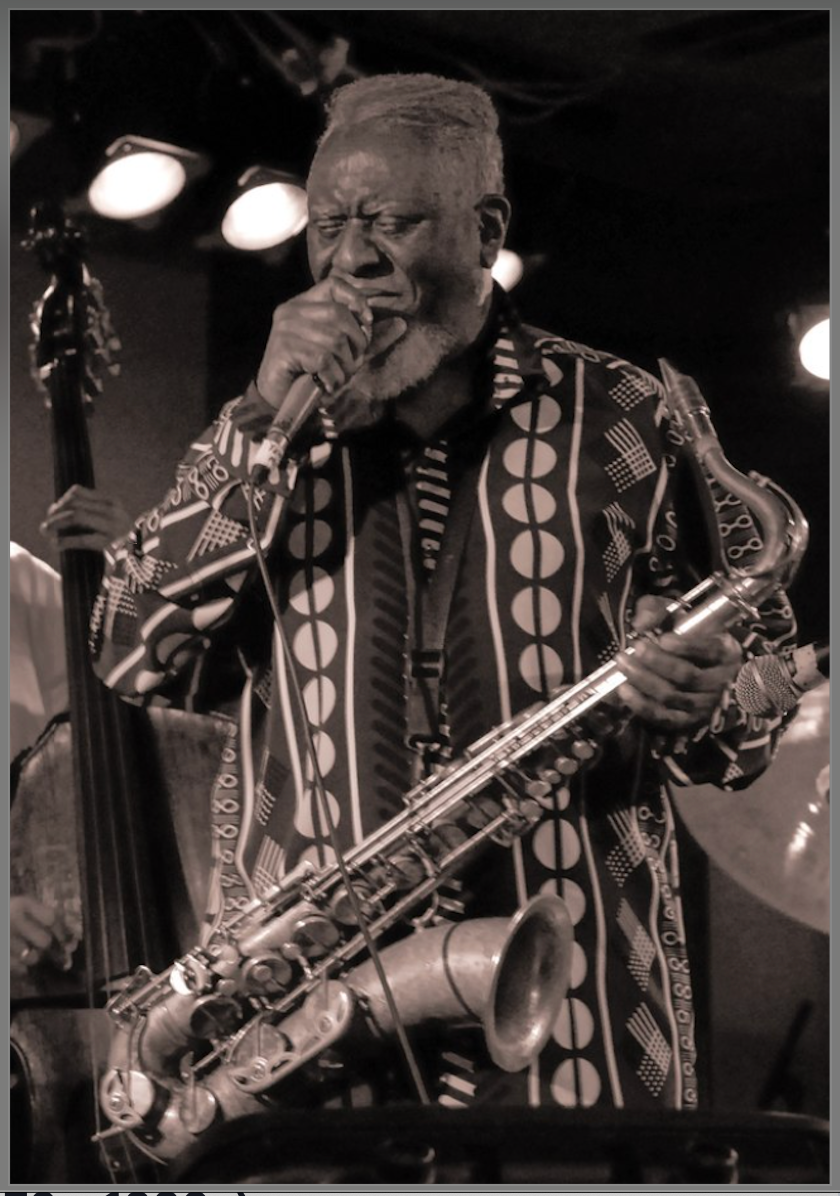
image source: Wikipedia Commons
Pharoah Sanders (1940–2022) was an iconic jazz saxophonist who was famous for pushing new and innovative techniques on the instrument. He often utilized harmonics and multiphonics, which were rare on the saxophone.
Famous for his work with Sun Ra, he also collaborated with John Coltrane and moved his artistic inspiration toward the newly emerging spiritual jazz movement. He became a prolific figure in the free jazz world and, despite not always receiving critical acclaim, kept true to his artistic vision.
Check out Pharoah Sanders playing in his original tune The Creator Has A Master Plan:
John Gilmore
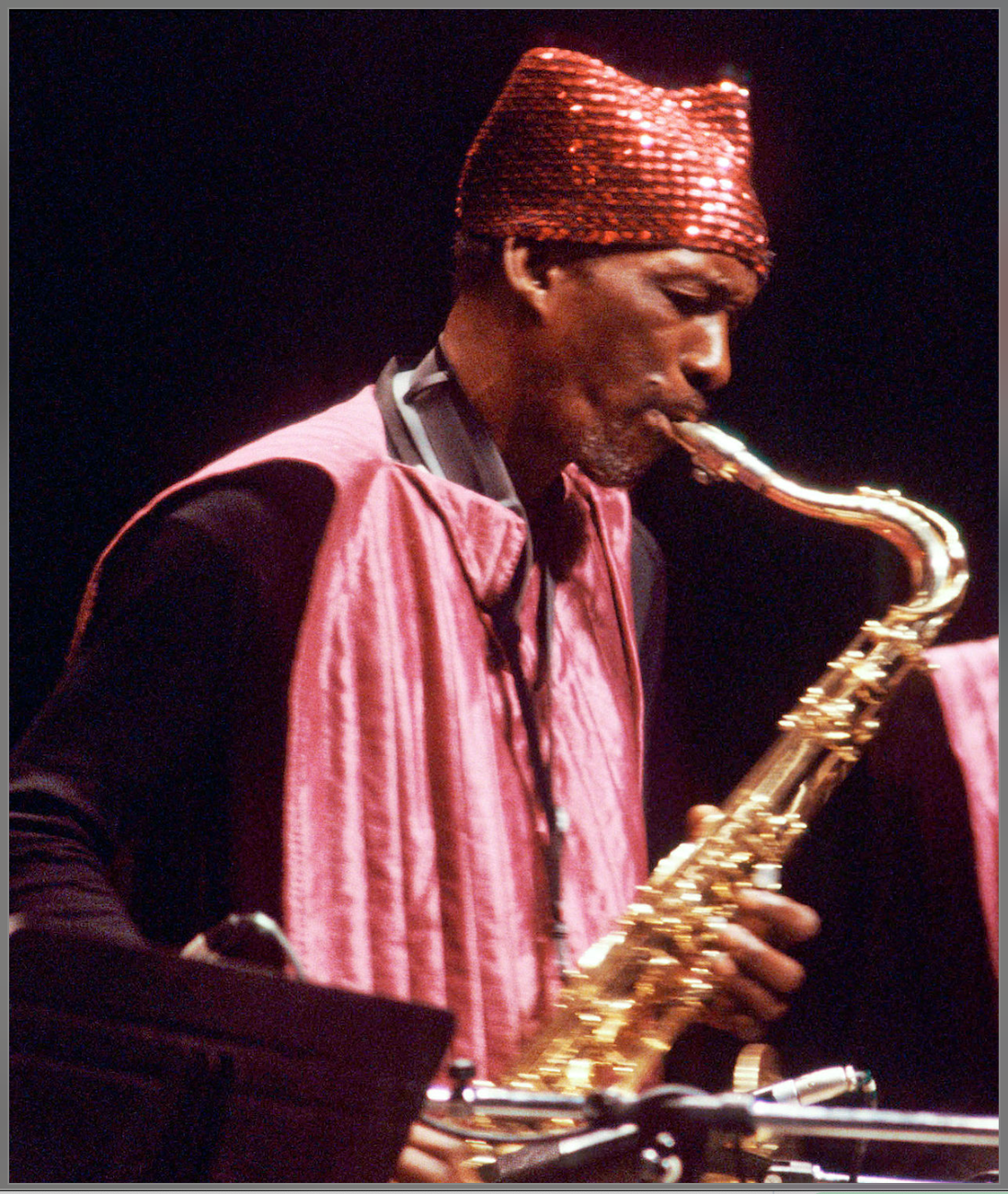
image source: Wikipedia Commons
John Gilmore (1931–1995) was a jazz saxophonist and percussionist most famous for his work with Sun Ra and the Sun Ra Arkestra. Though he never received as much critical acclaim as his contemporaries, John Gilmore was highly respected by other jazz musicians in the scene.
John Coltrane even took lessons from him despite being a few years older than Gilmore. Though he primarily played with the Sun Ra Arkestra for the majority of his career, he also worked alongside many jazz and blues greats as a side man.
For example, he performed with Miles Davis, Dinah Washington, blues guitarist B. B. King, McCoy Tyner, Charles Mingus, and Art Blakey.
Check out John Gilmore playing with Art Blakey’s Jazz Messengers in 1965:
Eric Dolphy
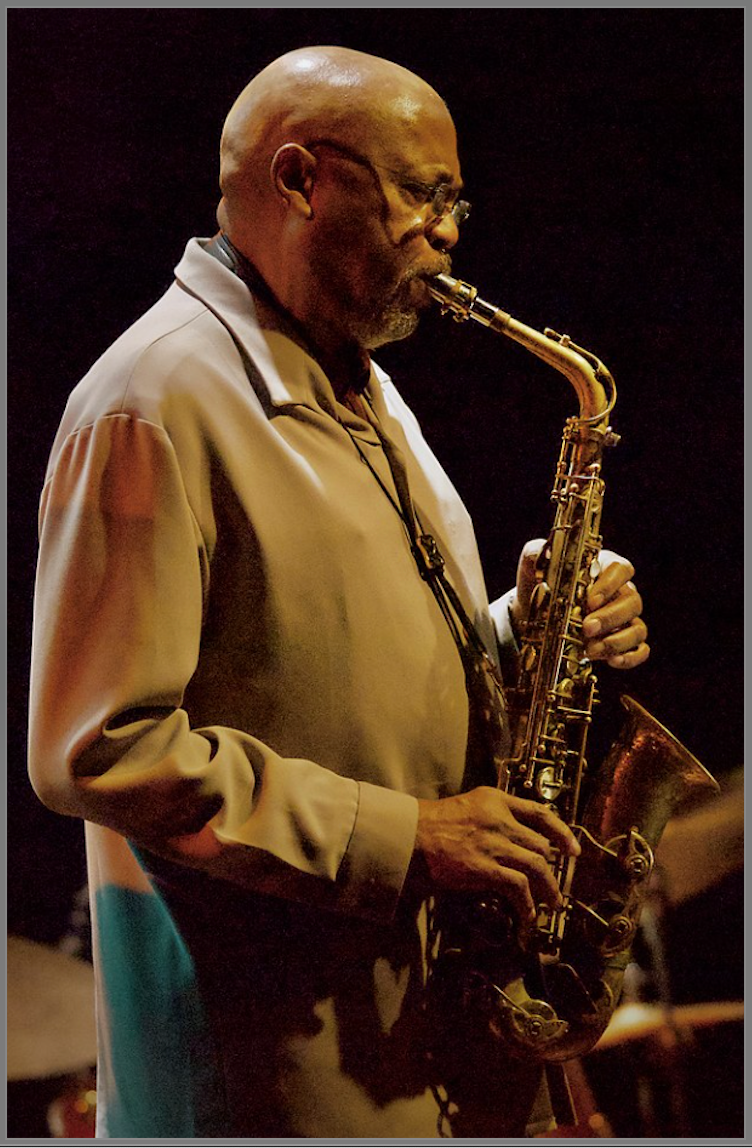
image source: Wikipedia Commons
Eric Dolphy (1928–1964) was a saxophonist, flutist, and bass clarinet player who was famous for his unique sound and for utilizing advanced intervallic concepts and mimetics in his saxophone playing.
He worked with Charles Mingus and John Coltrane, pushing a kind of jazz that some might call “free” but was actually abstracted versions of traditional jazz compositional concepts and language. He had an extensive solo career that crossed into the contemporary classical world.
Check out this seemingly traditional version of Take the A Train, which features an Eric Dolphy solo that perfectly exhibits his unique intervallic concepts and playing style:
Soul Jazz and Jazz Fusion Sax Players (1970s-1980s):
Soul Jazz emerged in the late 1950s as the logical conclusion of Post-Bop. It gained popularity through the 1960s and 1970s and blended elements of jazz, blues, gospel, and R&B. This genre is characterized by its funky grooves, catchy melodies, and an emphasis on groove and feel over complex improvisation.
Jazz Fusion, which emerged in the late 1960s and flourished in the 1970s and 1980s, represented a hybrid of jazz with rock, funk, and other musical styles. This genre emerged after the digital revolution came to music. Jazz-rock bands like Steely Dan used jazz harmonies (and often utilized jazz musicians).
Fusion bands often used electric instruments, in contrast to the traditional acoustic instruments in jazz, and incorporated extended improvisations, complex time signatures, and a focus on virtuosity and technical proficiency.
So, who are the soul jazz and fusion saxophone players you need to check out?
Stanley Turrentine
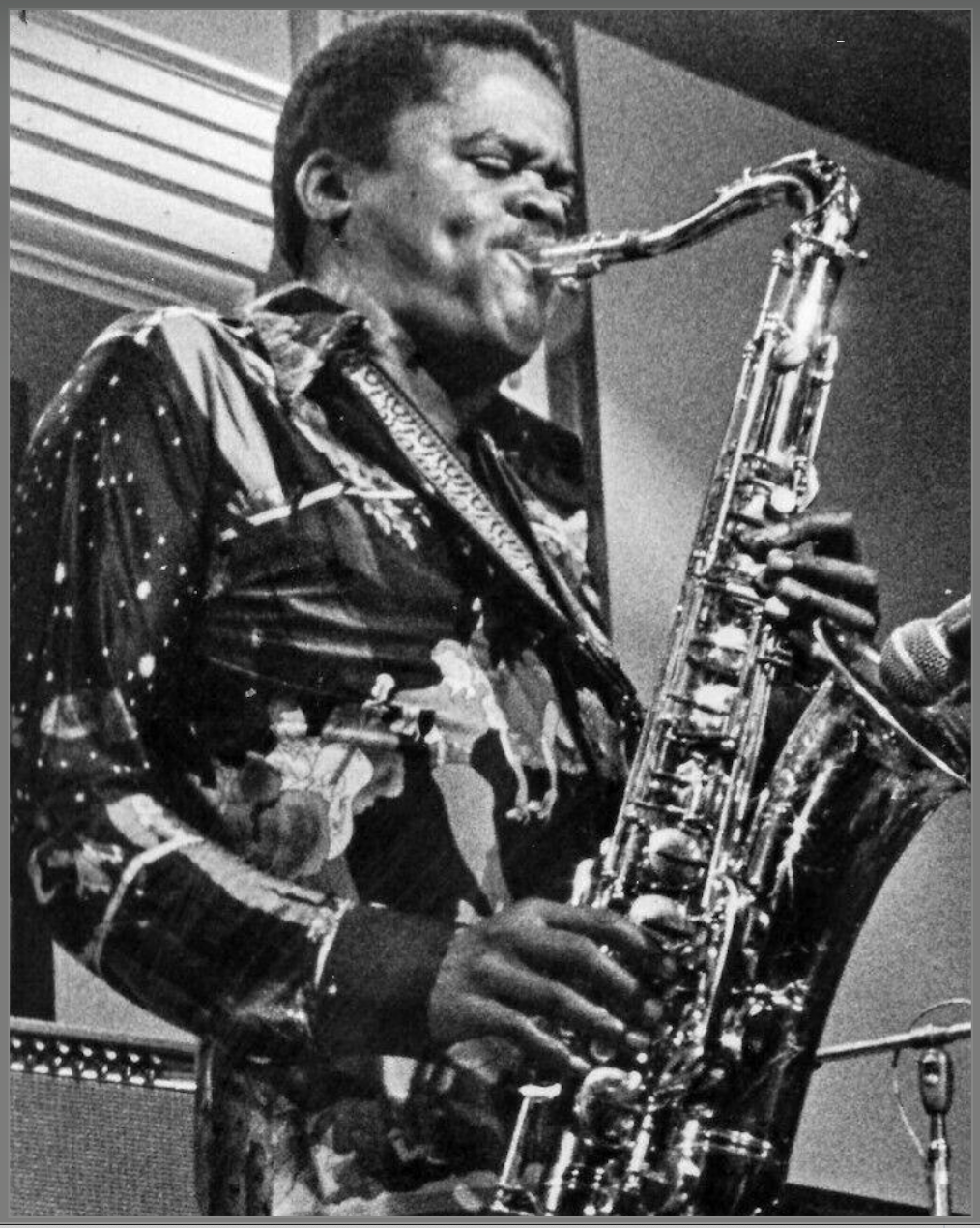
image source: Wikipedia Commons
Stanley Turrentine (1934–2000) was a soul jazz and R&B saxophonist whose career saw him play alongside jazz greats like Max Roach and Tadd Dameron. He is most famous for his work with soul jazz organist Jimmy Smith.
He also branched into jazz fusion, playing alongside Freddie Hubbard, Milt Jackson, George Benson, Ron Carter, and Grant Green in the 70s before returning to his soul jazz roots in the 80s and 90s.
Here is a video of Stanley Turrentine playing alongside singer Lou Rawls in 1989:
Michael Brecker
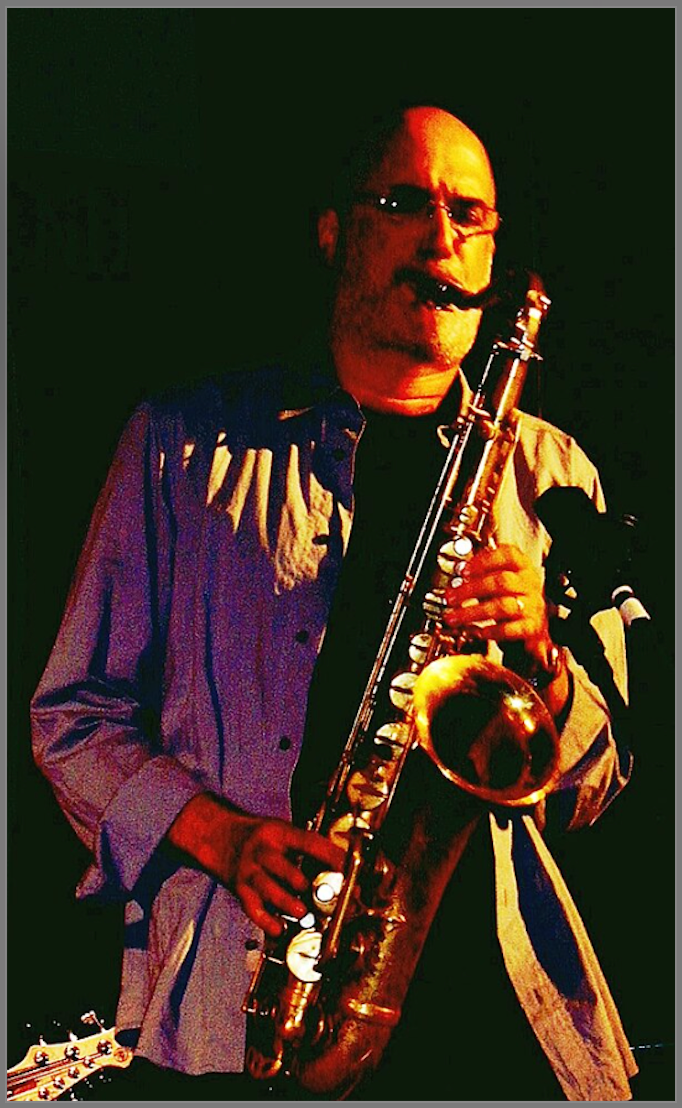
image source: Wikipedia Commons
Michael Brecker (1949–2007) was a renowned saxophonist and composer whose improvisational concepts have inspired many of his contemporaries and successors. He was in demand as a sideman, session, musician, and soloist because of his incredible technical mastery and improvisational prowess.
His list of credits is immense. In pop music, we worked as a session sax player for Steely Dan, Joni Mitchell, Lou Reed, Dire Straits, Eric Clapton, Billy Joel, Dan Fogelberg, Frank Zappa, John Lennon, Aerosmith, Bruce Springsteen, Parliament-Funkadelic, and Chaka Khan, to name a few.
He was also highly sought after among jazz musicians, working alongside Chick Corea, Chet Baker, George Benson, Quincy Jones, Charles Mingus, Jaco Pastorius, McCoy Tyner, Pat Metheny, Horace Silver, Grant Green, Herbie Hancock, and Gary Burton. And this is a short list!
He was even in NBC’s Saturday Night Live band! There’s a good chance you’ve already heard him without even knowing it.
Check him out playing on the jazz standard Softly As In A Morning Sunrise:
Grover Washington Jr.
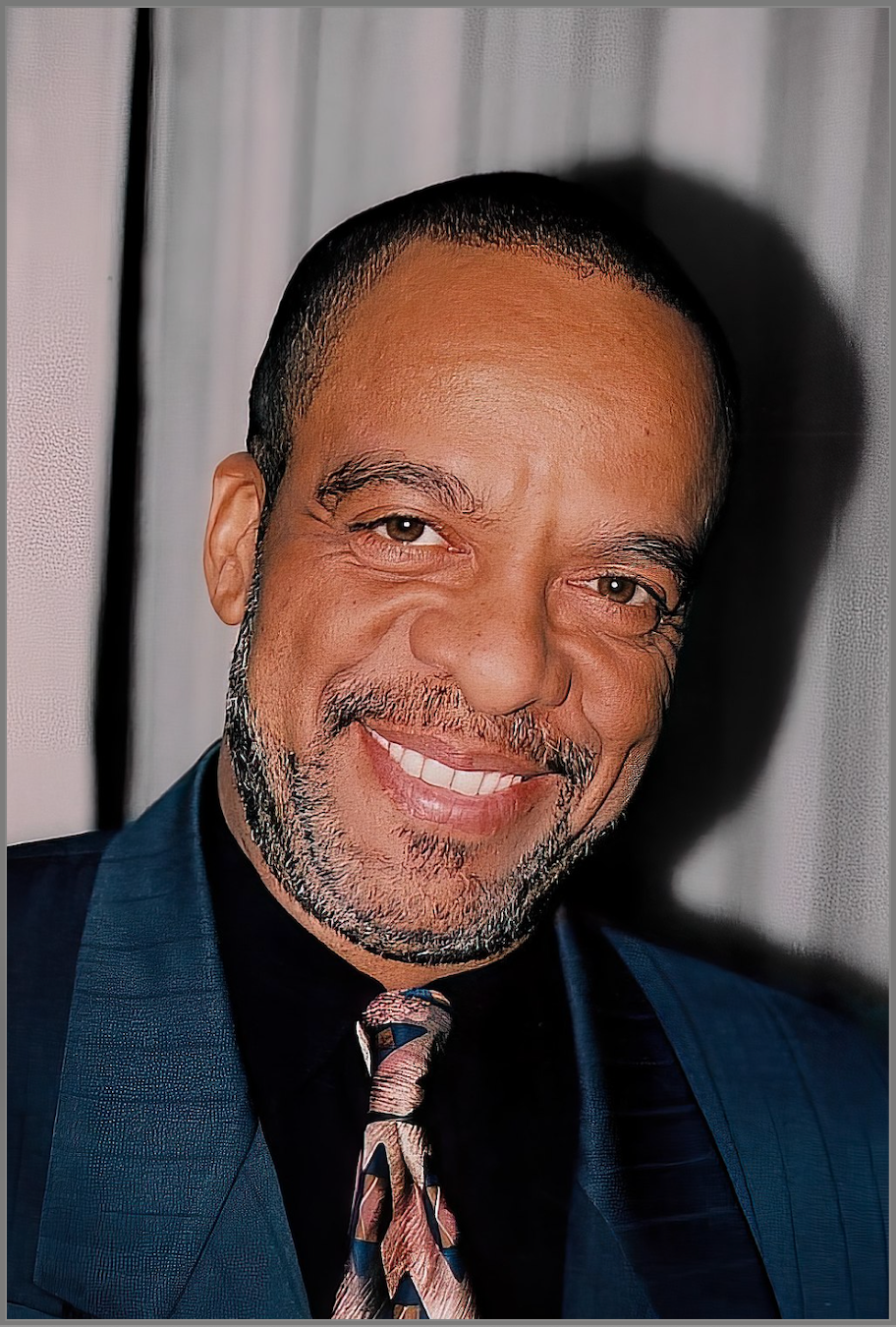
image source: Wikipedia Commons
Grover Washington Jr. (1943–1999) was an iconic saxophonist whose R&B sensibilities and jazz chops helped him cross over to mainstream acclaim with pop singers Bill Withers and Patti LaBelle. His compositions and smooth playing style are considered foundational to the smooth jazz sub-genre.
Grover Washington Jr. was highly proficient on the soprano saxophone, alto saxophone, and tenor sax. He played all three during his long career in soul jazz, smooth jazz and pop music. He also played with many other jazz greats, including Gerry Mulligan, Lonnie Smith, Dexter Gordon, and Kenny Burrell.
Check out Grover Washington Jr. playing in his own composition, Mister Magic:
Joe Lovano

image source: Wikipedia Commons
Joe Lovano (1952) is a jazz multi-instrumentalist who is most famous as an alto player, though he also plays drums, flute, and clarinet. He has worked with several other acclaimed fusion and contemporary jazz musicians, including John Scofield, Bill Frisell, Paul Motian, Esperanza Spalding, and Lonnie Smith.
He has had a long career as a band leader, releasing over 30 albums from the 1980s to the present day in addition to his trio work with Paul Motian.
Check him out playing on the ballad Portrait of Jenny:
Jan Garbarek
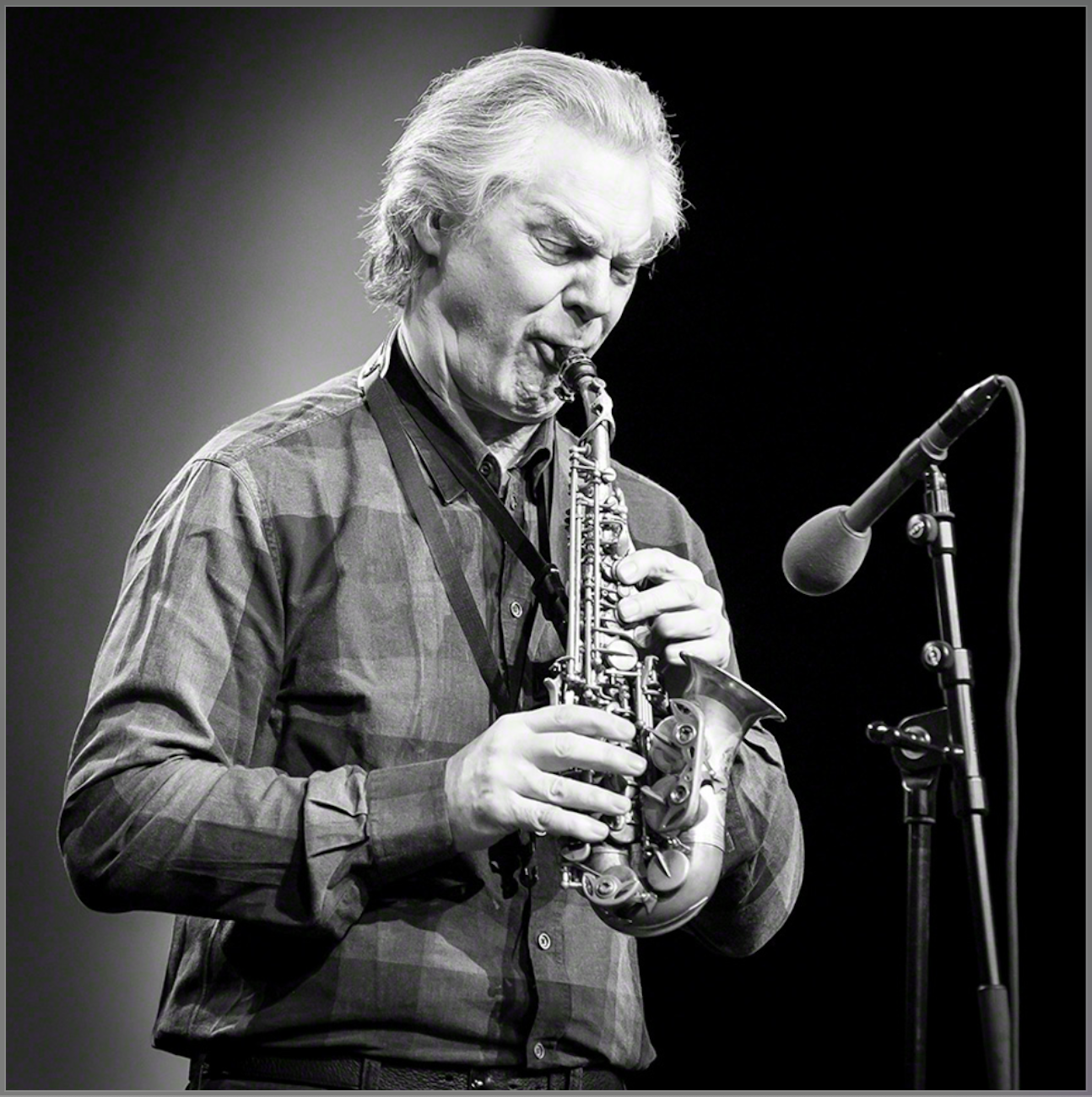
image source: Wikipedia Commons
Jan Garbarek (1947) is a Norwegian saxophonist and composer who is famous for his contributions to jazz, modern classical music, and world music. He is known for his creative use of long tones, silence, and Scandinavian folk melodies in his playing and compositions.
He first gained notoriety playing with Keith Jarret in the 1970s and soon branched off on his own, playing and composing in a style described as new-age music.
Though he had been releasing ambient jazz compositions and recordings since the 1960s, his eclectic and unique style took off with the onset of contemporary jazz in the 1980s and 90s.
Check out Jan playing on his composition Twelve Moons:
Contemporary and Modern Jazz Saxophonists (Active 1990s-Present Day):
That leaves us with the modern state of jazz music and the many saxophonists who are currently taking the jazz tradition and evolving it into the future.
The jazz genre today blends various genres, including rock, funk, hip-hop, electronic music, and world music. It is characterized by its eclectic approach, which combines traditional jazz elements with modern sensibilities.
These famous saxophone players are currently shaping the jazz world and are worth checking out!
Mark Turner
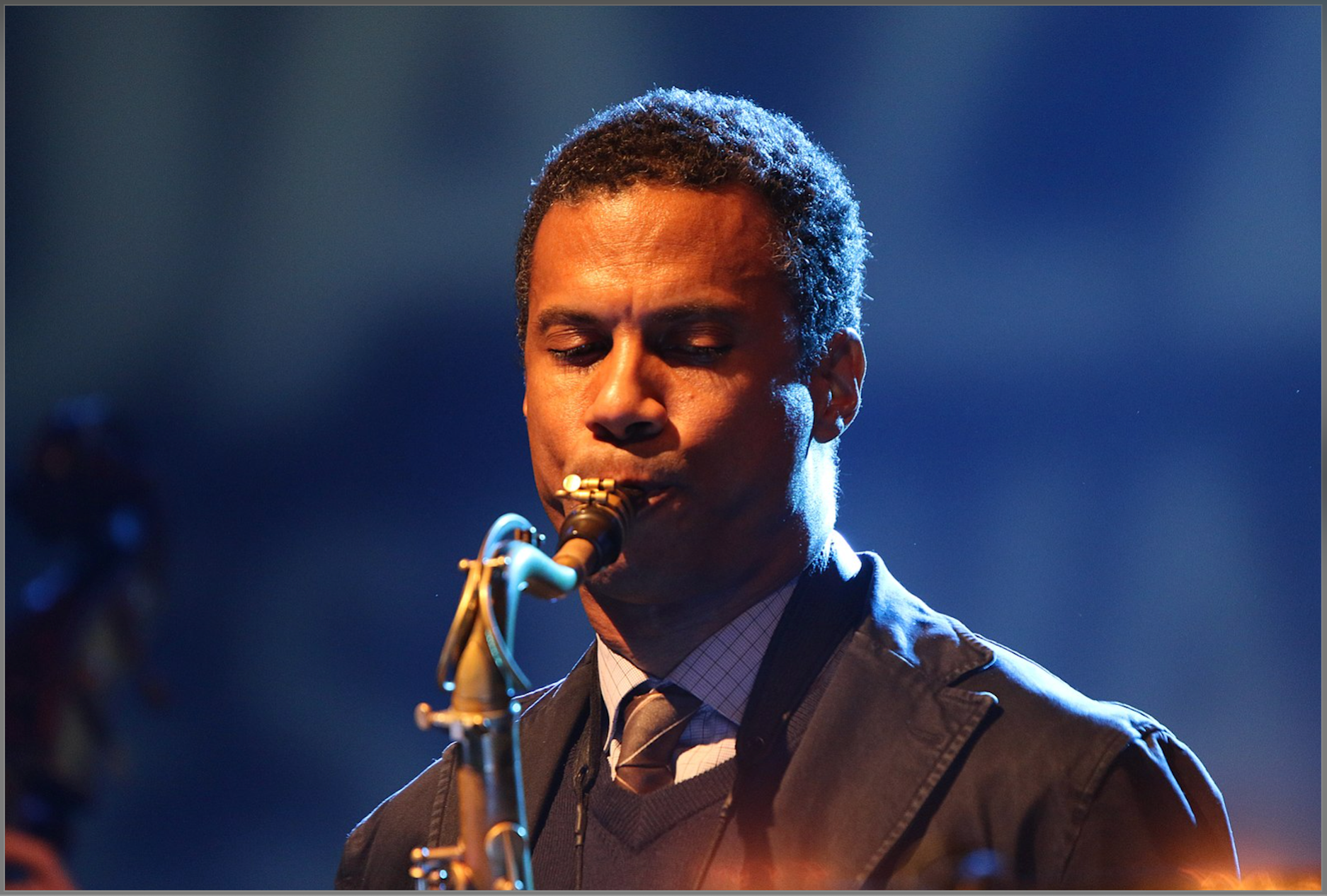
image source: Wikipedia Commons
Mark Turner (1965) is a contemporary jazz saxophonist known for his improvisations in the altissimo range and rhythmically complex lines that span several octaves. His compositions use odd meters, polyrhythms, and large intervallic leaps.
He has worked extensively with contemporary and modern jazz players, such as guitarist Kurt Rosenwinkel, trumpeter Avashai Cohen, guitarist Gilad Hekselman, and saxophone players Seamus Blake and Joshua Redman.
He also plays in a trio called Fly with bassist Larry Grenadier.
Check him out playing on the classic Benny Golson tune Along Came Betty:
Chris Potter
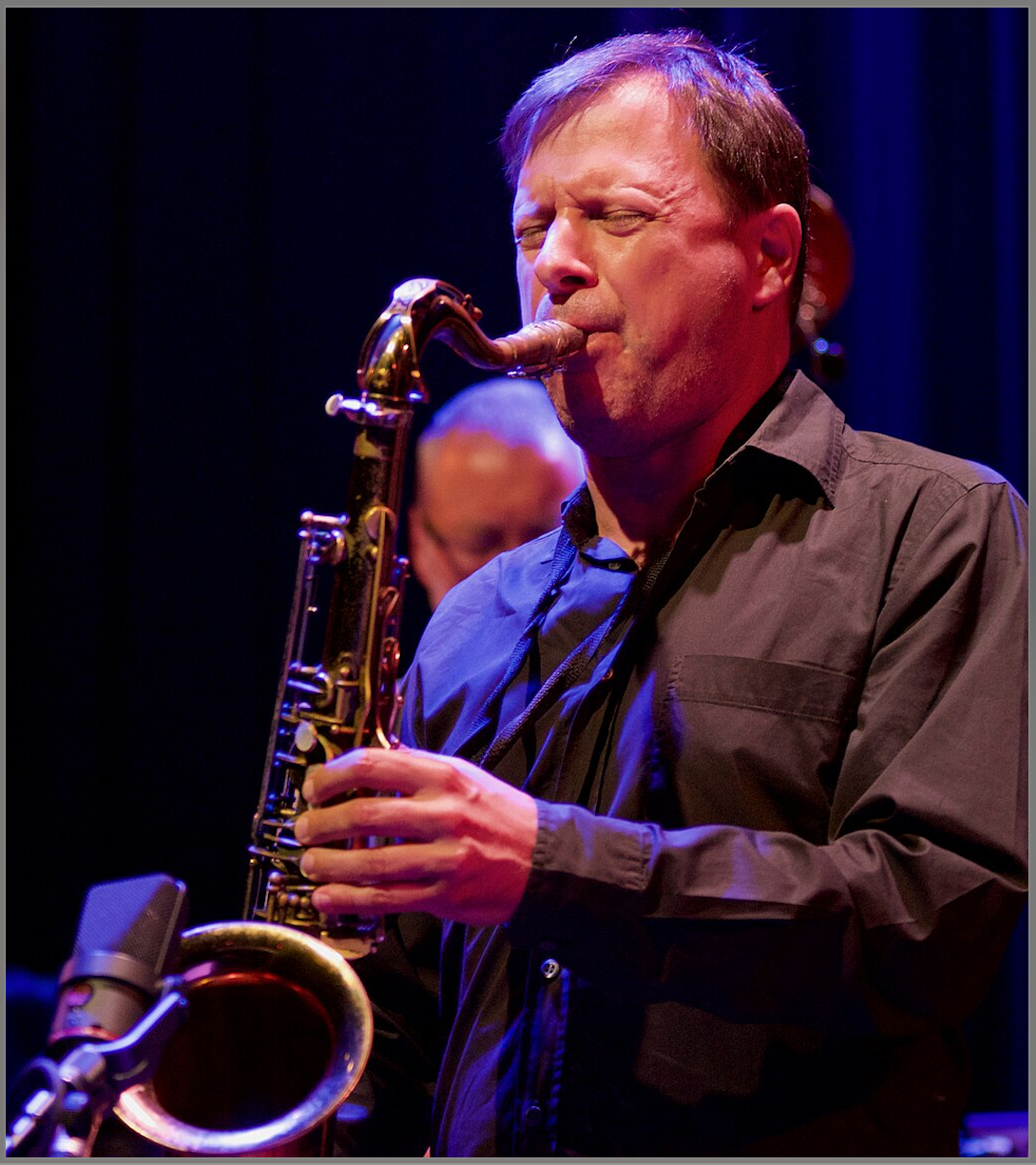
image source: Wikipedia Commons
Chris Potter (1971) is a contemporary saxophonist and composer known for extensive session work as well as leading his own band. He has released over 20 albums as a band leader and has appeared on numerous other recordings.
Some of the artists Chris Potter has worked with include Pat Metheny, Kenny Werner, the Mingus Big Band, Paul Motian, Jim Hall, James Moody, Joe Lovano, Steve Swallow, Steely Dan, Dave Holland, and Joanne Brackeen.
Check out Chris Potter in 1993 playing with trumpeter Red Rodney:
https://www.youtube.com/watch?v=-clrc3zWqNc
Melissa Aldana

image source: Wikipedia Commons
Melissa Aldana, born in 1988, is the youngest saxophone player on this list. She is also the youngest artist and the first female artist to win the Thelonius Monk International Jazz Saxophone Competition.
She has released several albums under her Crash Trio and under her quartet with Lage Lund or Sam Harris, Pablo Menares, and Kush Abadey.
Check out her trio playing Without a Song:
Joshua Redman
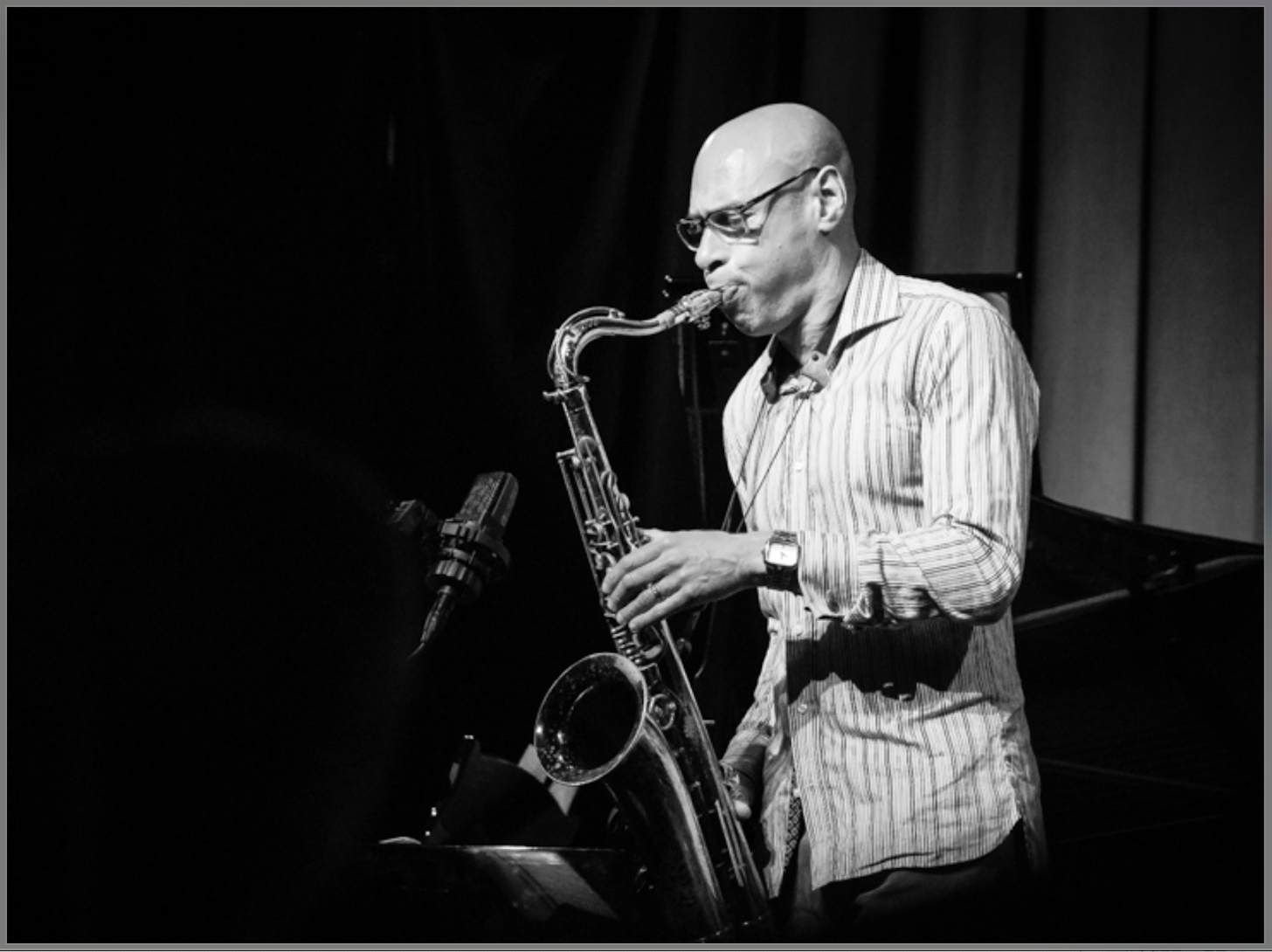
image source: Wikipedia Commons
Joshua Redman (1969) is a prolific saxophonist and session musician who has been active in the scene since the 90s.
He has recorded and performed with many jazz legends, including Pat Metheny, Brad Mehldau, Mark Turner, Peter Bernstein, Roy Hargrove, Christian McBride, Kurt Rosenwinkel, John Scofield, Toots Thielemans, McCoy Tyner, and Chick Corea to name a few.
He has also appeared on rock and pop records from artists like Stevie Wonder, Umphrey’s McGee, The Roots, and B. B. King.
Check out Joshua playing on a blues:
Donny McCaslin

image source: Wikipedia Commons
Donny McCaslin (1966) is another prolific recording artist and saxophonist who has been active in the scene since the 1990s. He has released several albums under his own name and appears as a sideman on many jazz and pop artists’ records.
His most notable pop appearances are on David Bowie’s recording Sue (Or in a Season of Crime) and the 2016 album Blackstar. However, he has worked with many pop and rock artists since the 1990s.
Check out Donny McCaslin leading a big band:
Ben Wendel
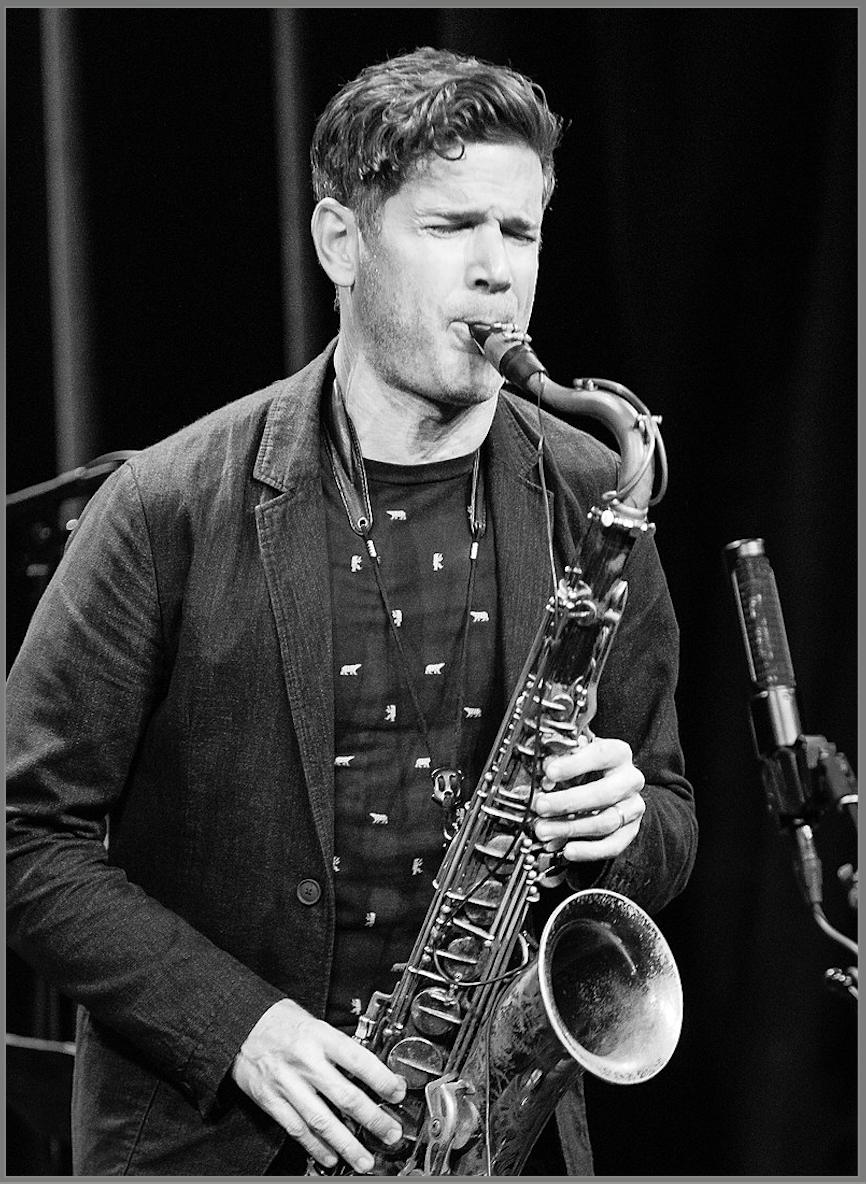
image source: Wikipedia Commons
Ben Wendel (1976) is an American saxophonist who is prominent in jazz and other genres of music. He has released seven albums under his own name and seven under his band Kneebody. In addition to jazz, he has appeared on hip-hop, rock, and pop records.
Notable artists he’s worked with include Snoop Dog, Daedalus, Prince, and Christina Aguilera.
Here is Ben Wendell playing with the Ben Wendel Group:
Seamus Blake
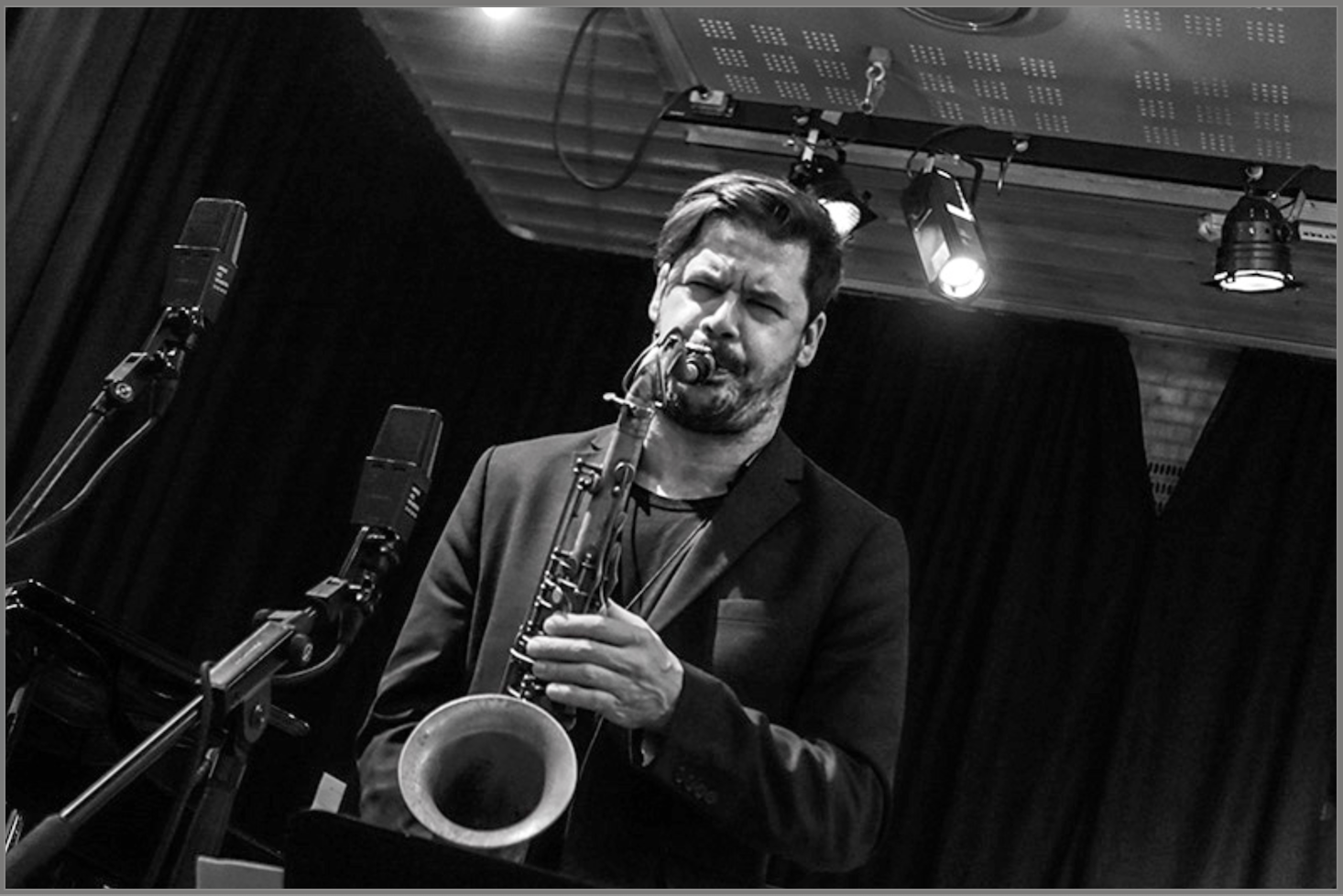
image source: Wikipedia Commons
Seamus Blake (1970) is a tenor saxophonist who has released sixteen albums under his own name and has worked with many other contemporary jazz musicians. Very active in the New York music scene, Blake is a prominent figure and first call for many jazz records.
Here is Blake on one of his own compositions, Gracia:
Ready To Take Your Jazz Saxophone Playing to the Next Level? Join the Inner Circle.
Want to take your saxophone playing to the next level?
The Learn Jazz Standards Inner Circle helps you focus on the important things and systematically helps you improve your jazz playing and music theory knowledge by studying jazz standards.
With monthly jazz standard studies and various jazz improvisation and jazz theory courses, you’ll have everything you need to evolve as a jazz saxophonist and become the player you want to be.
Want to improve in 30 days or less? Join the Inner Circle.


